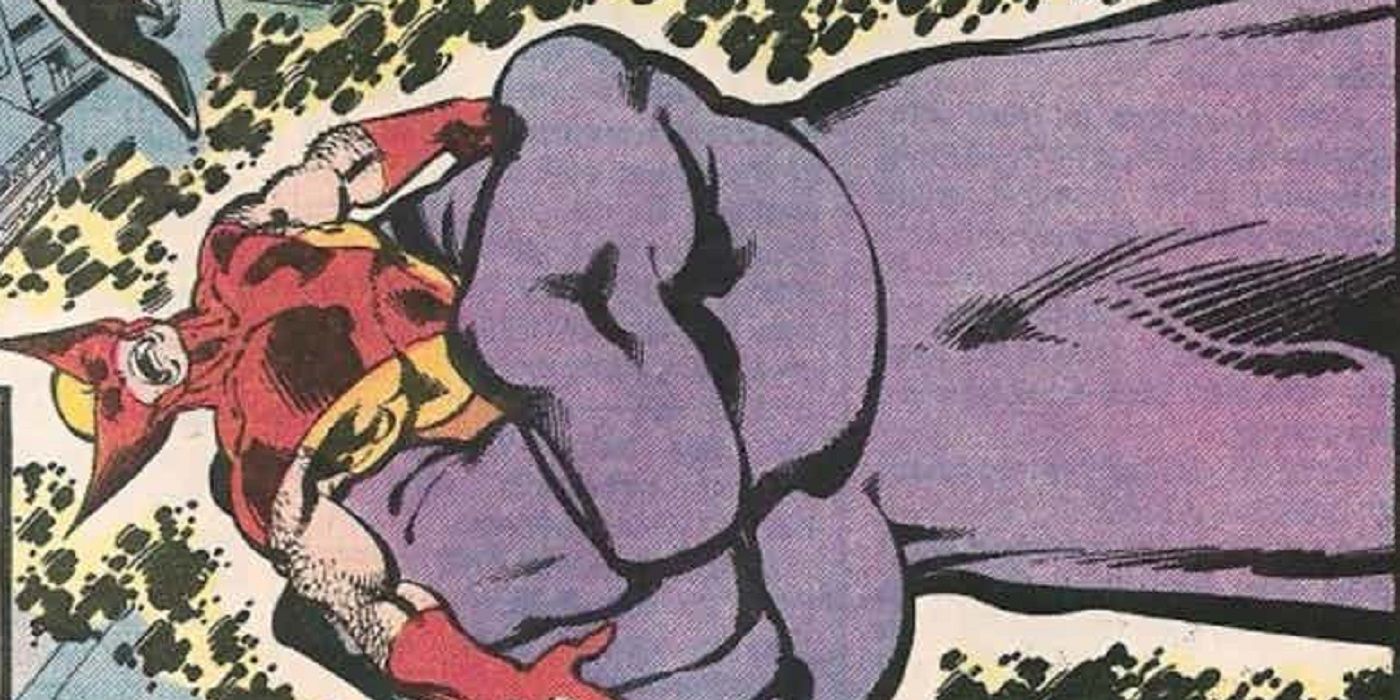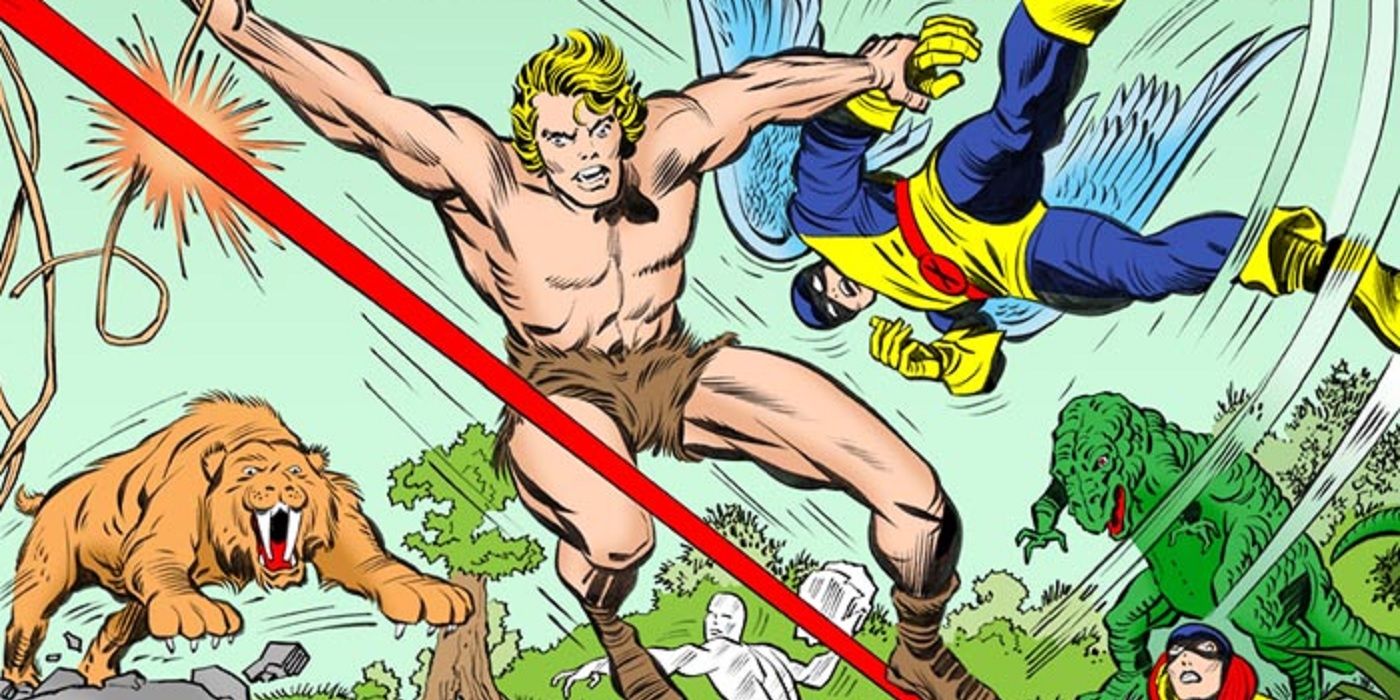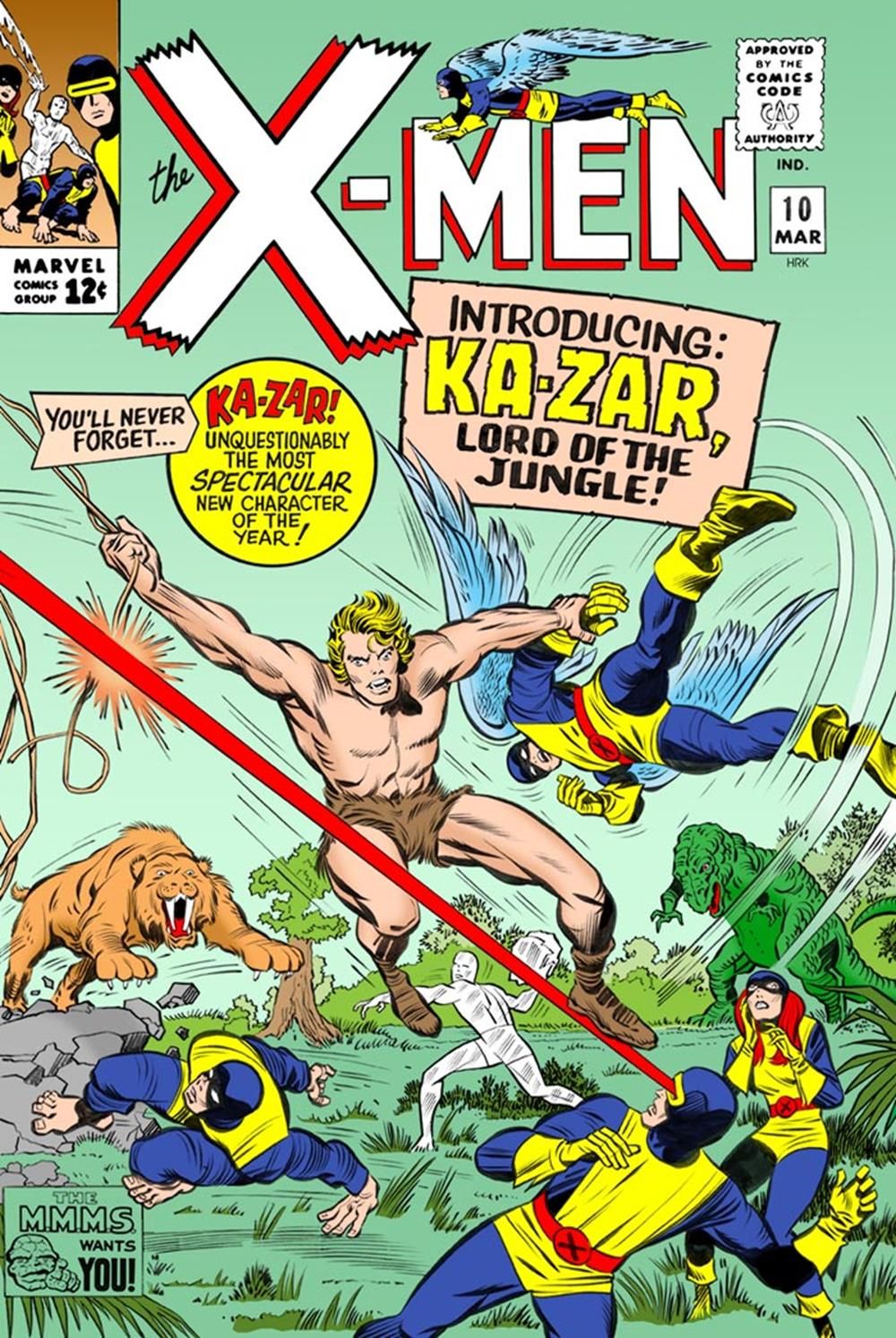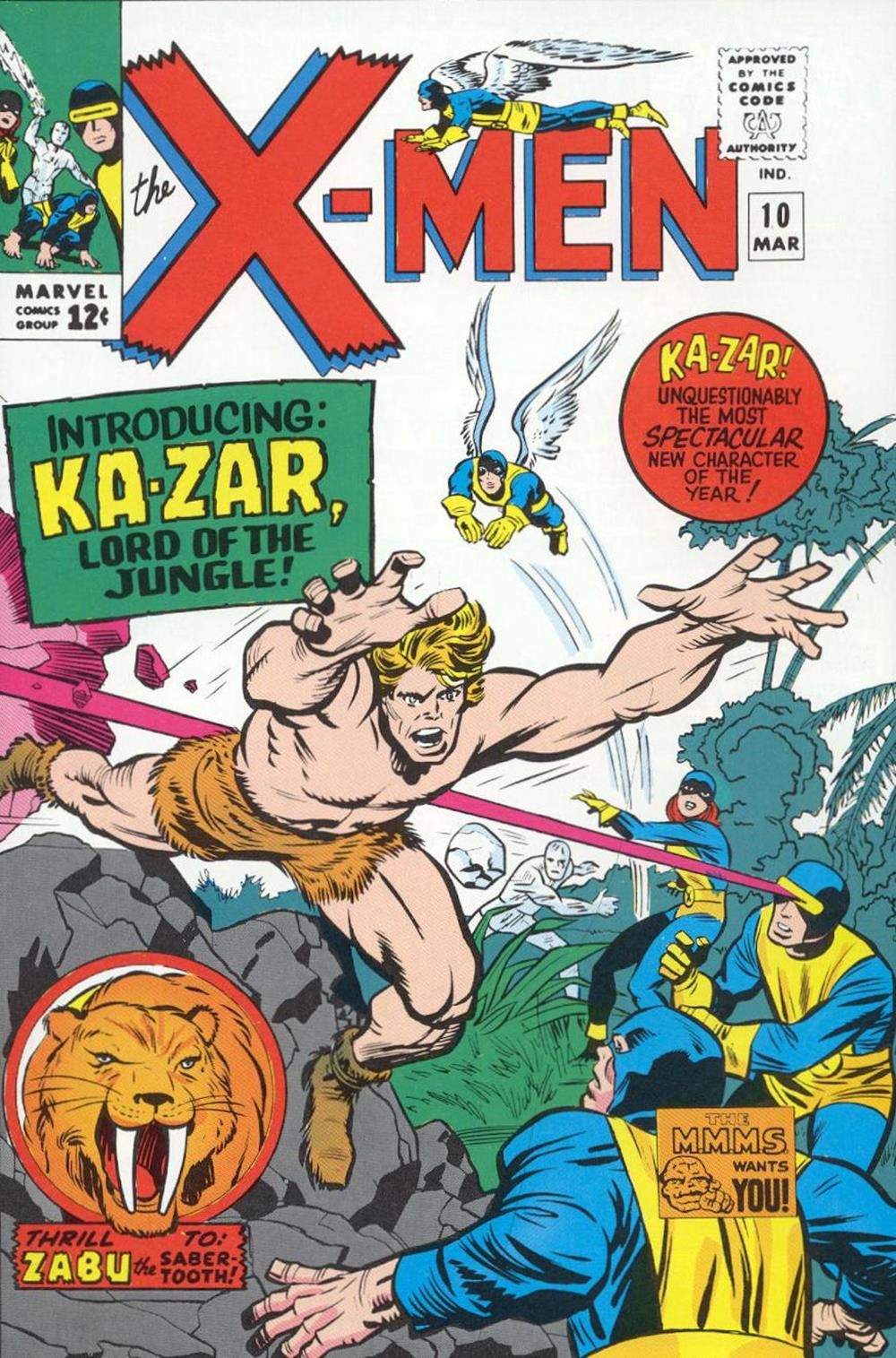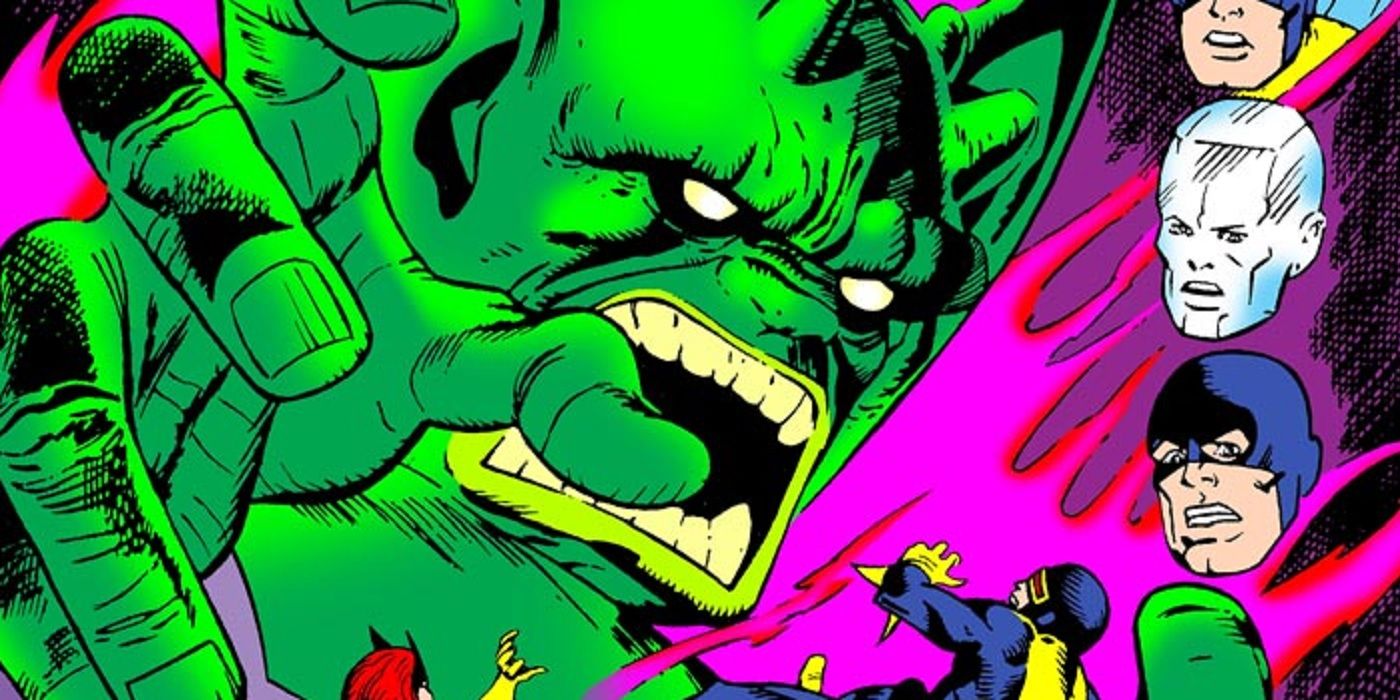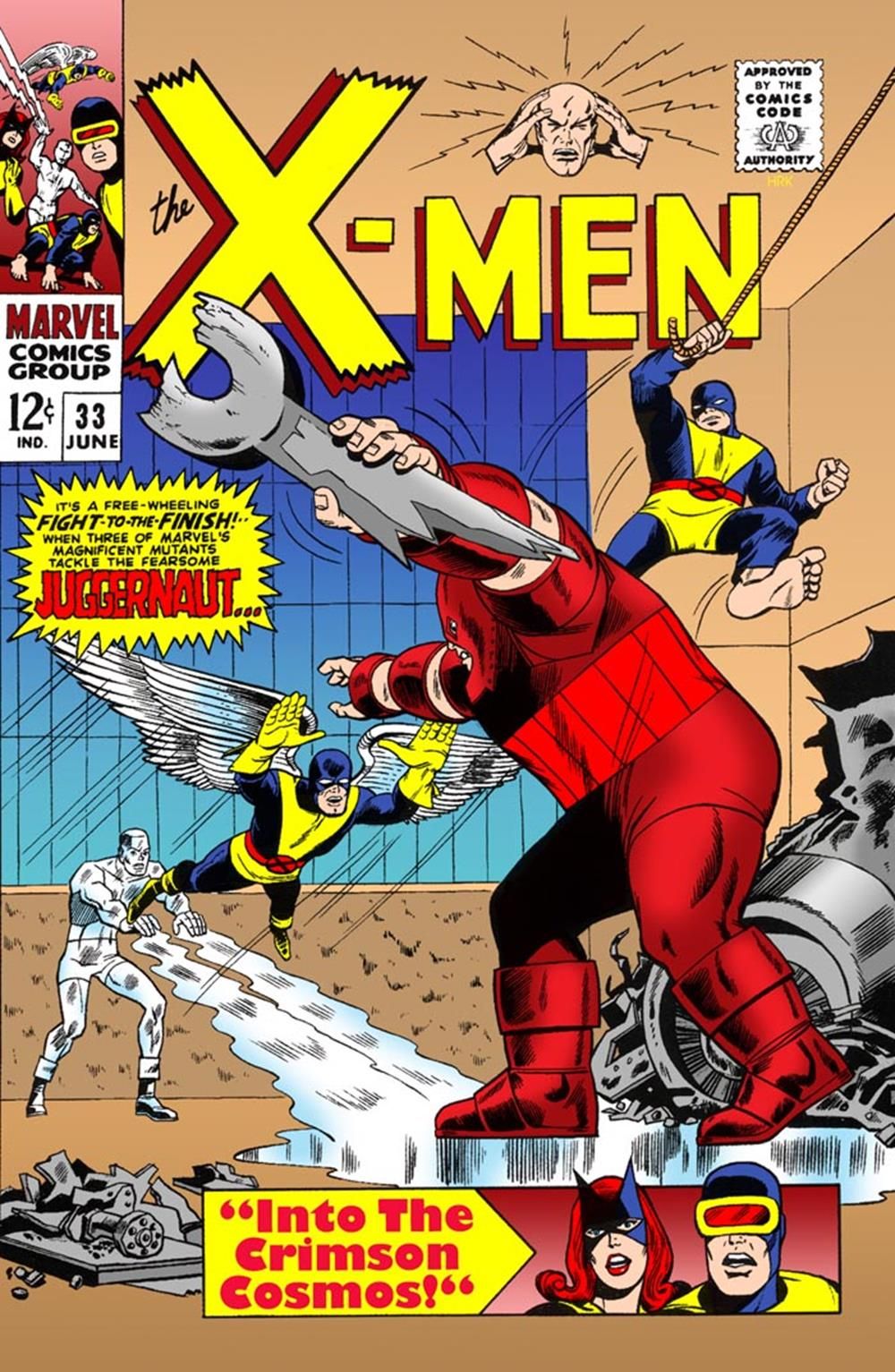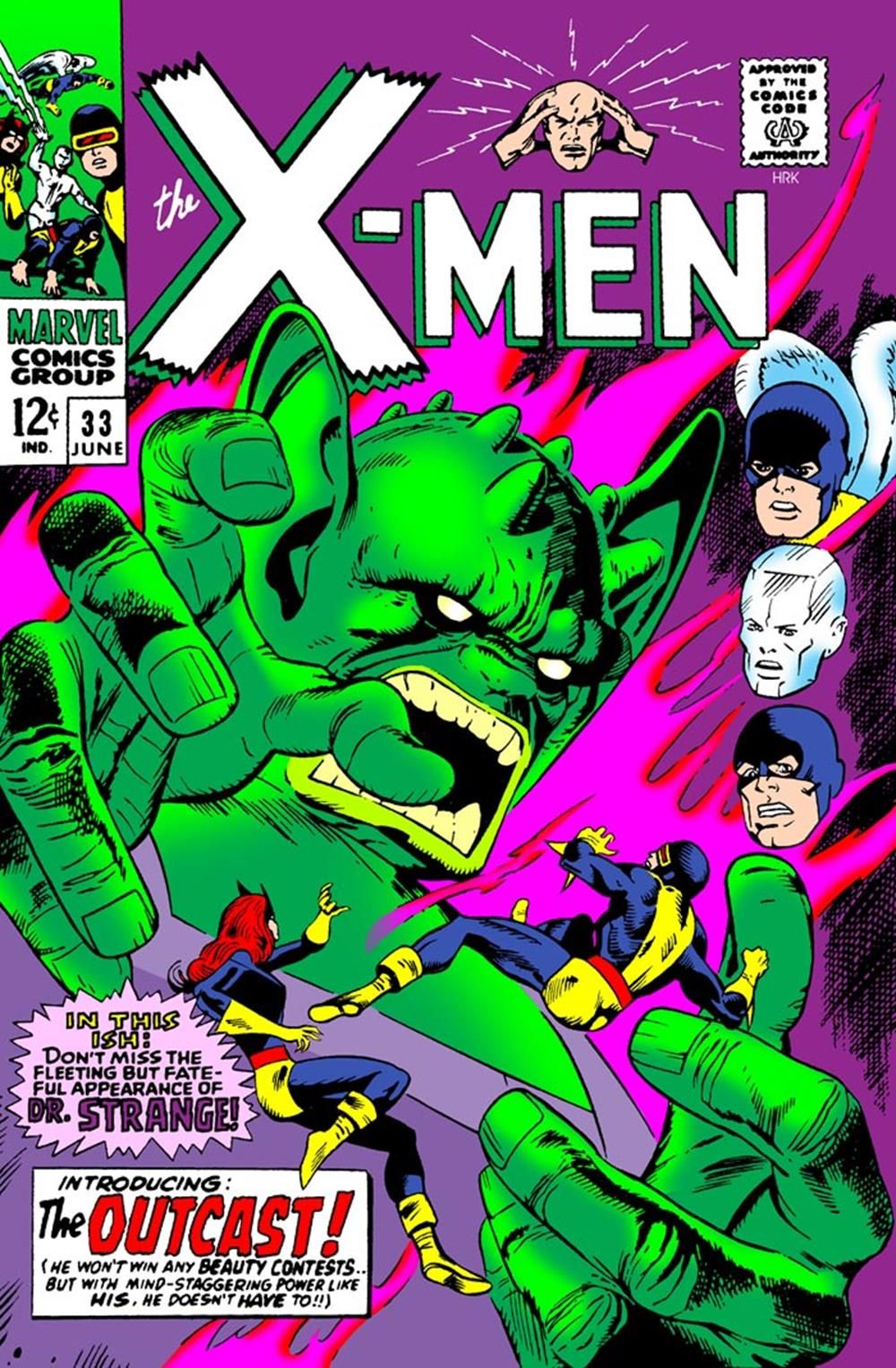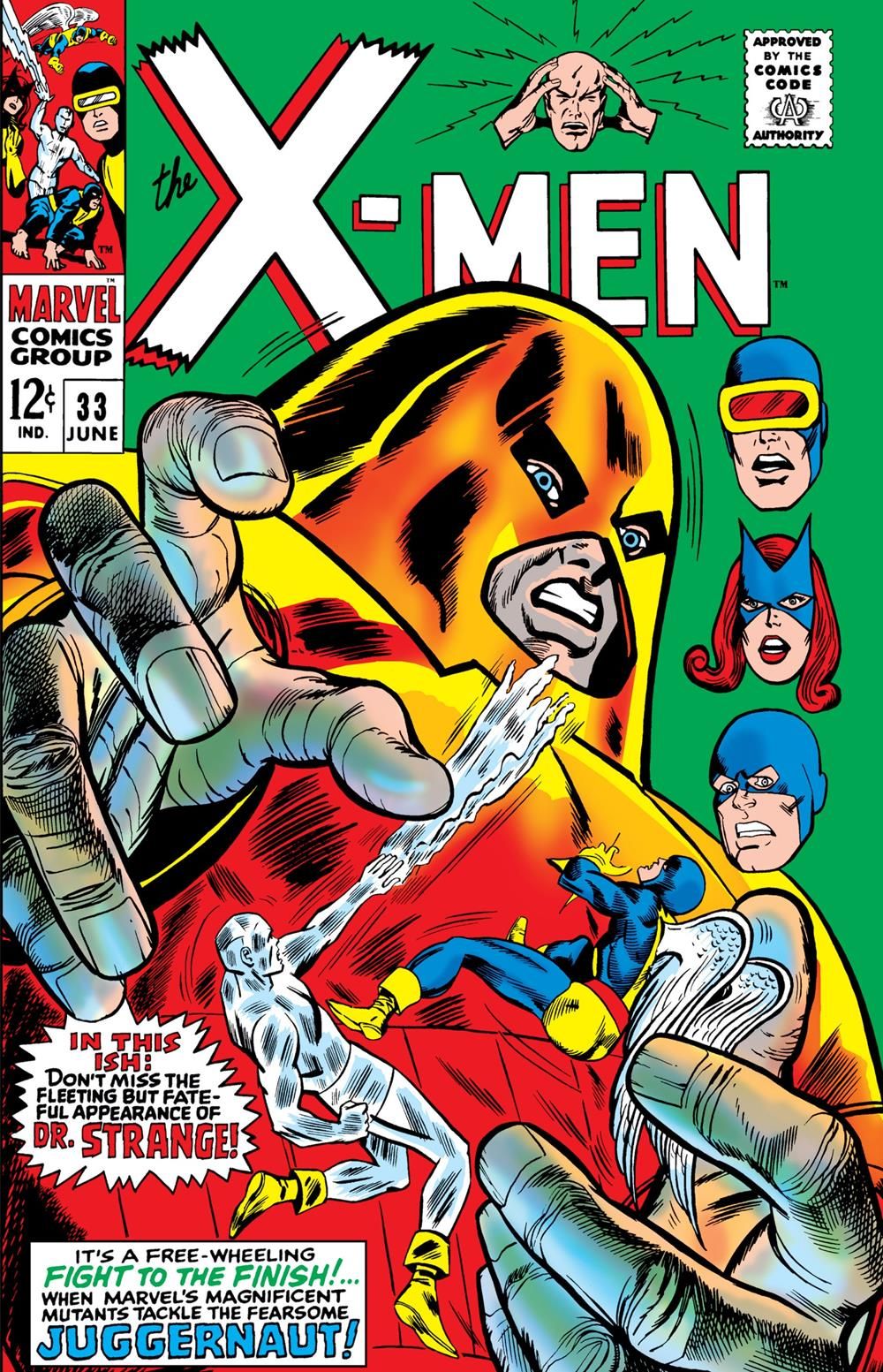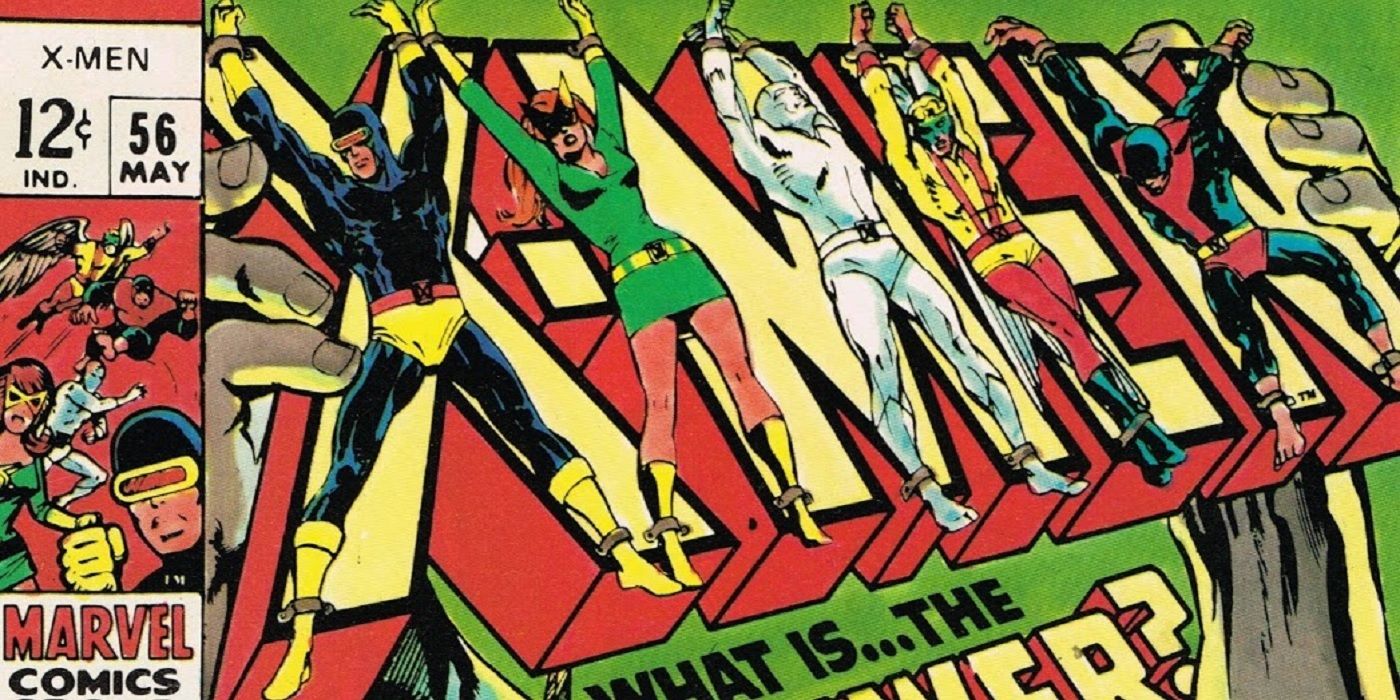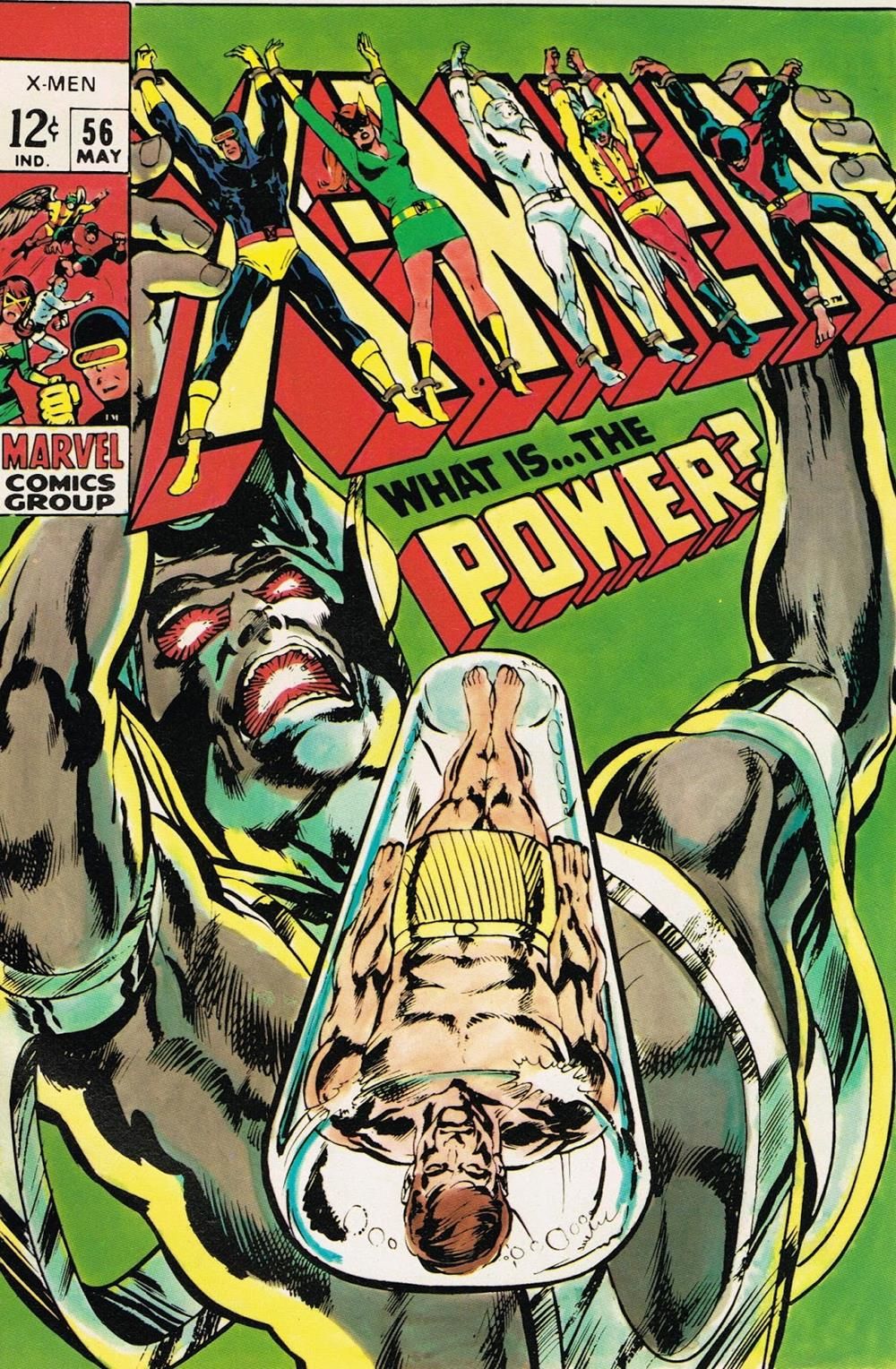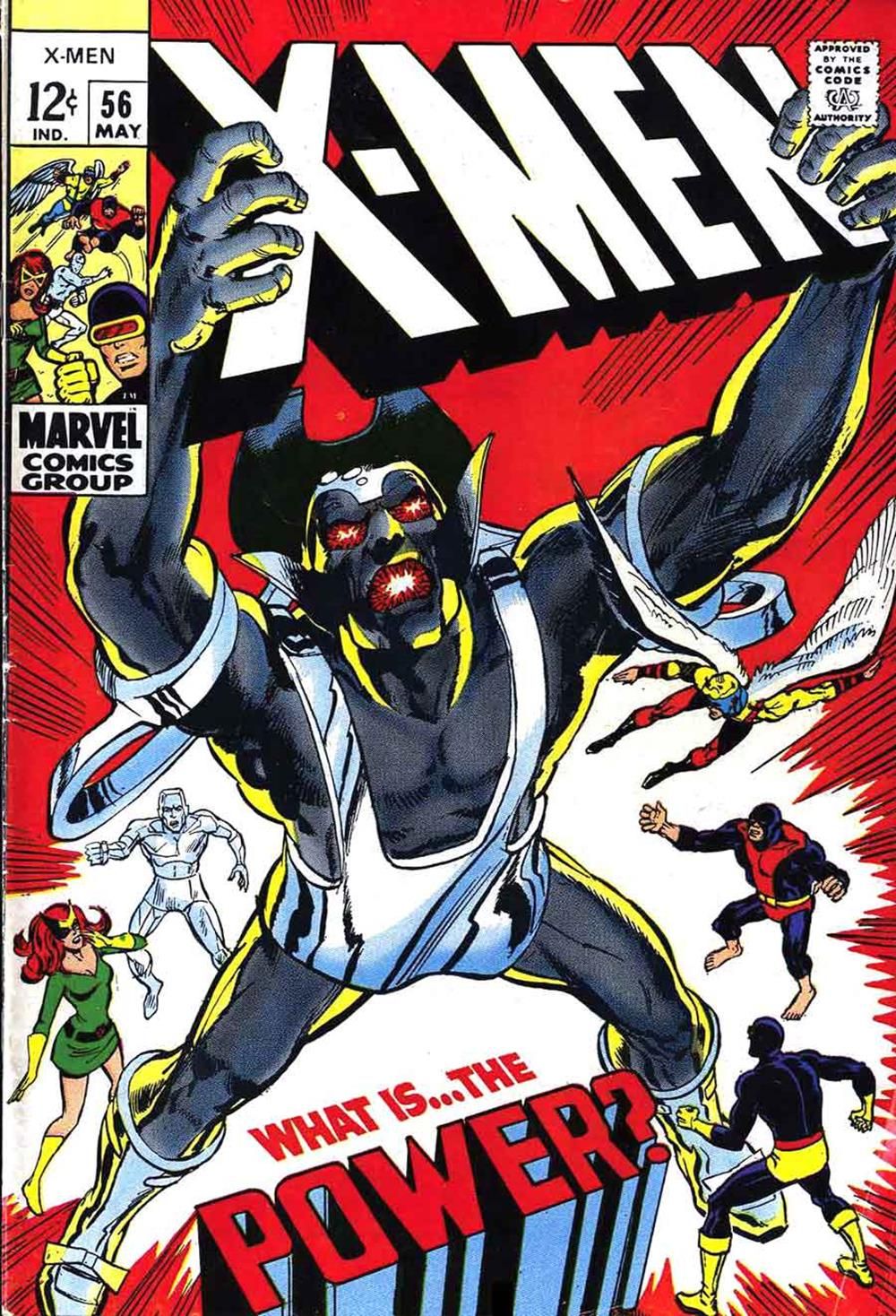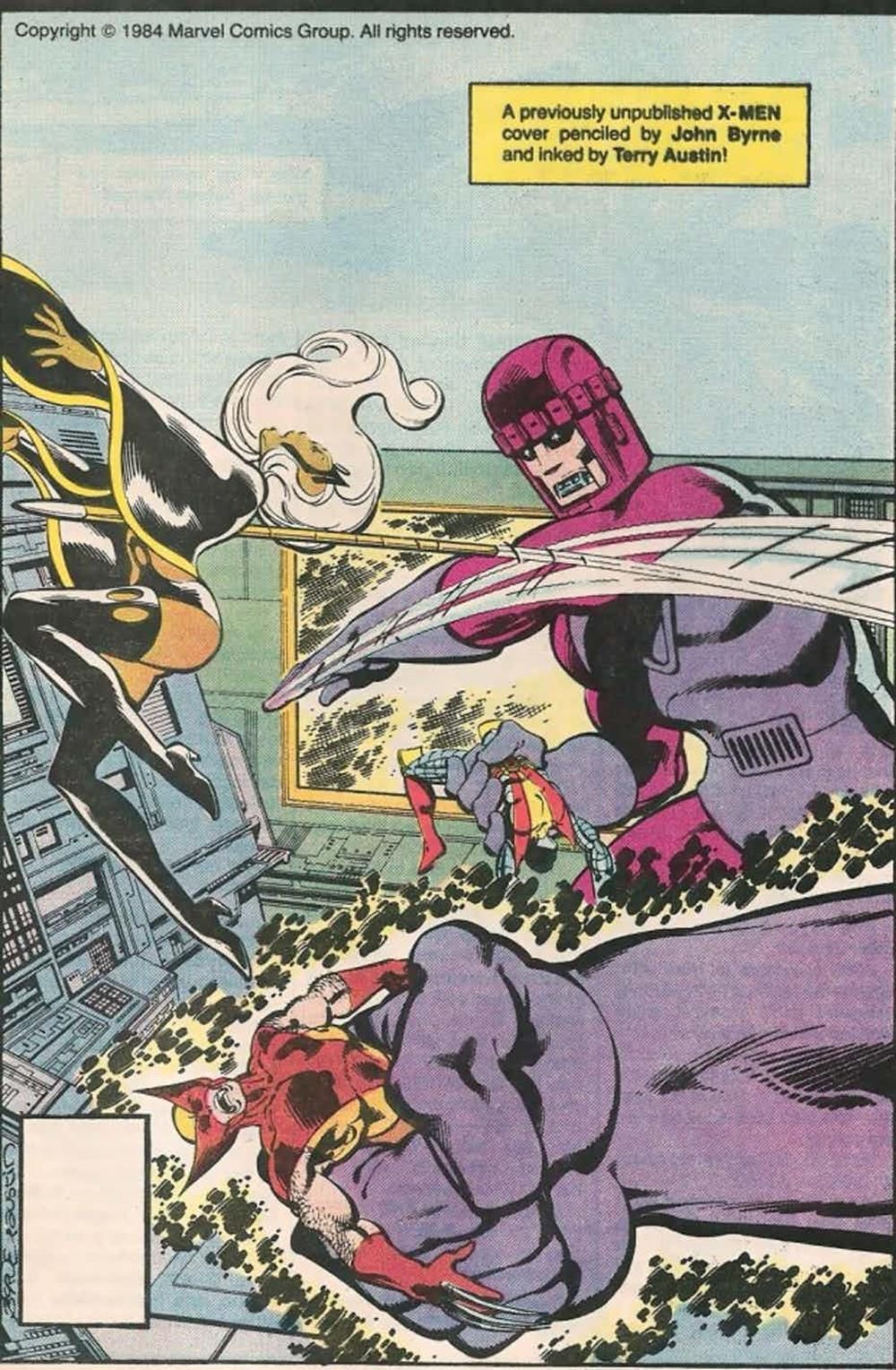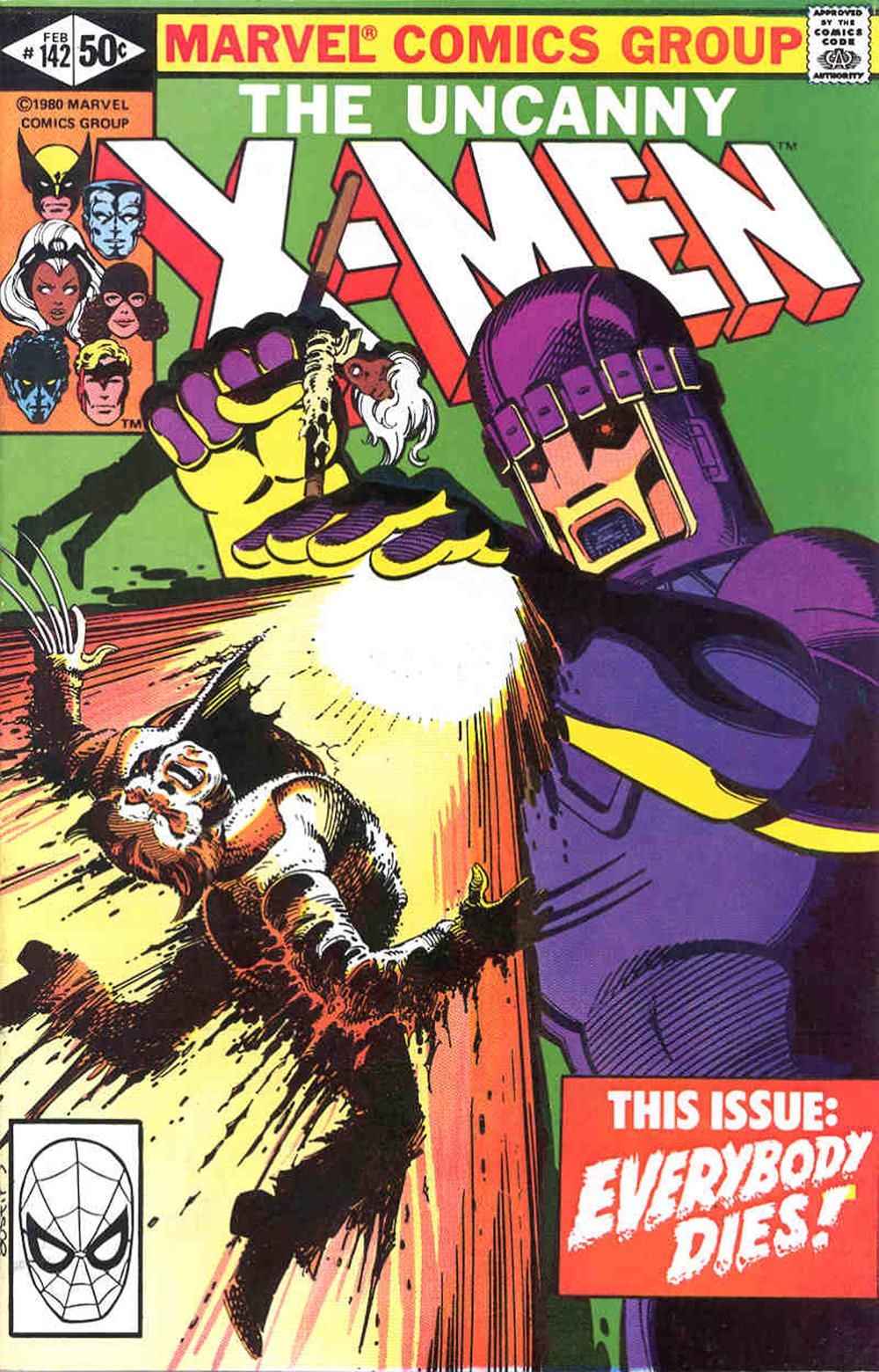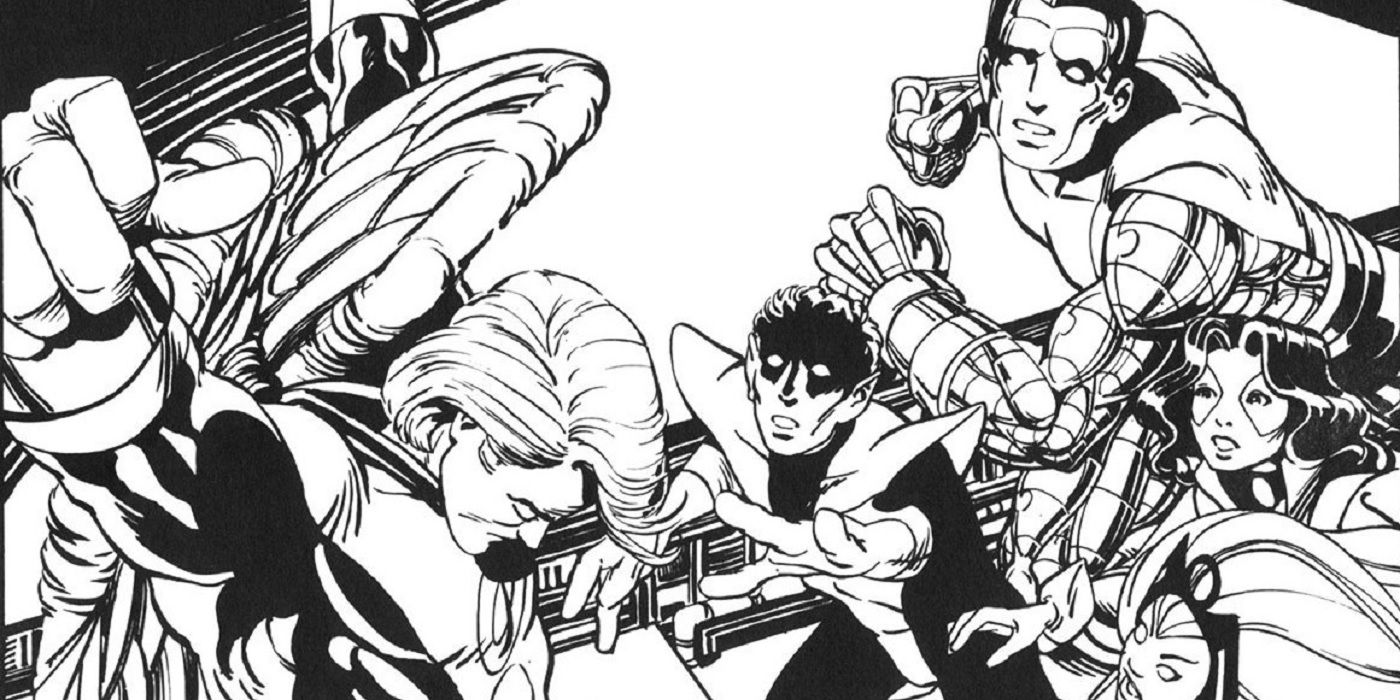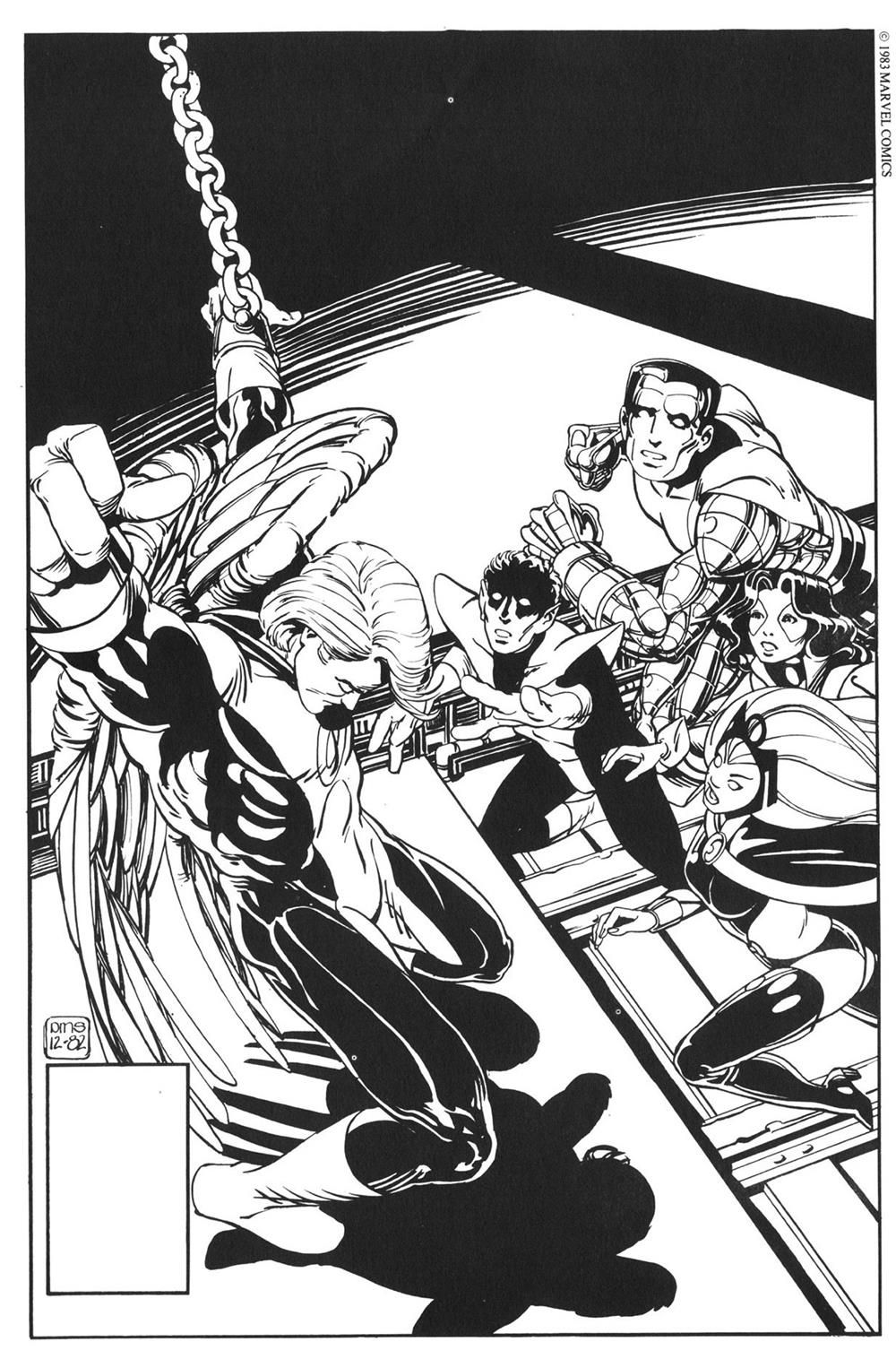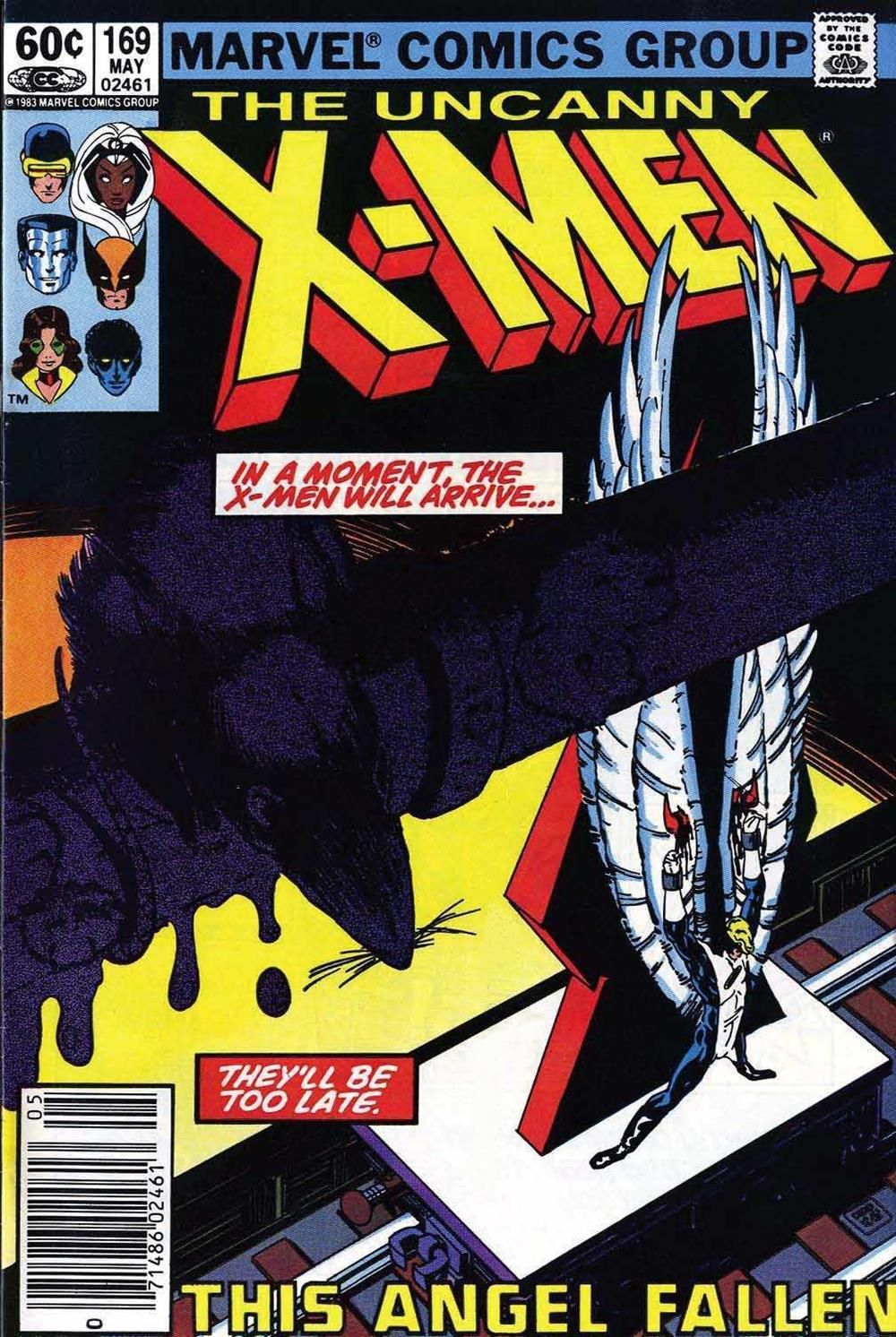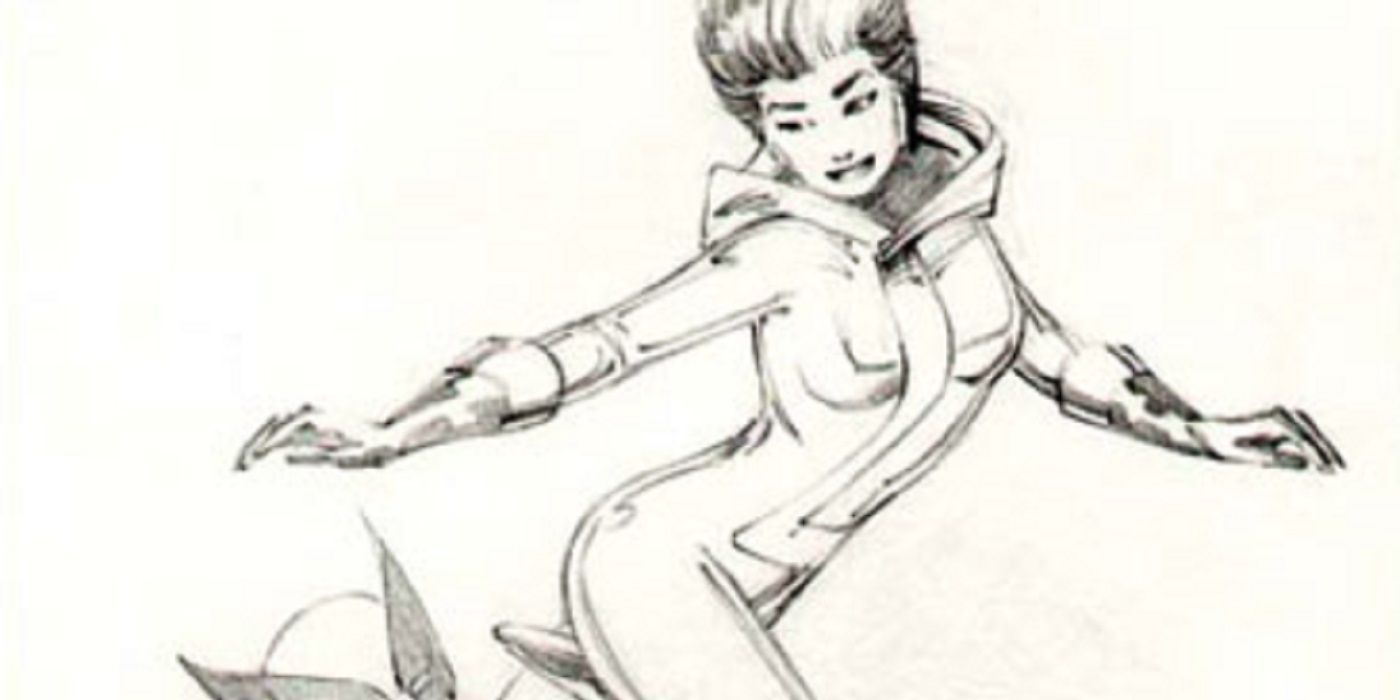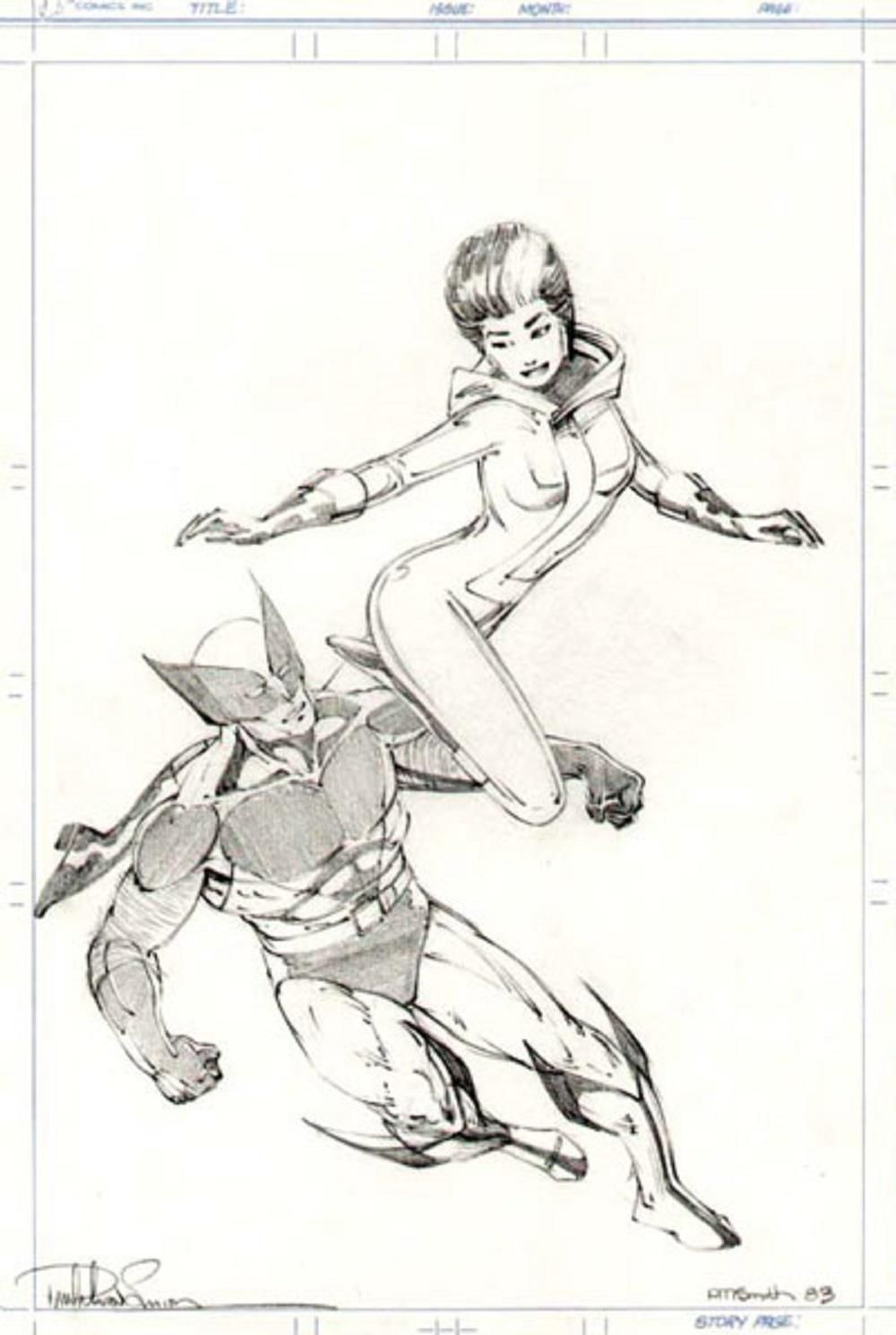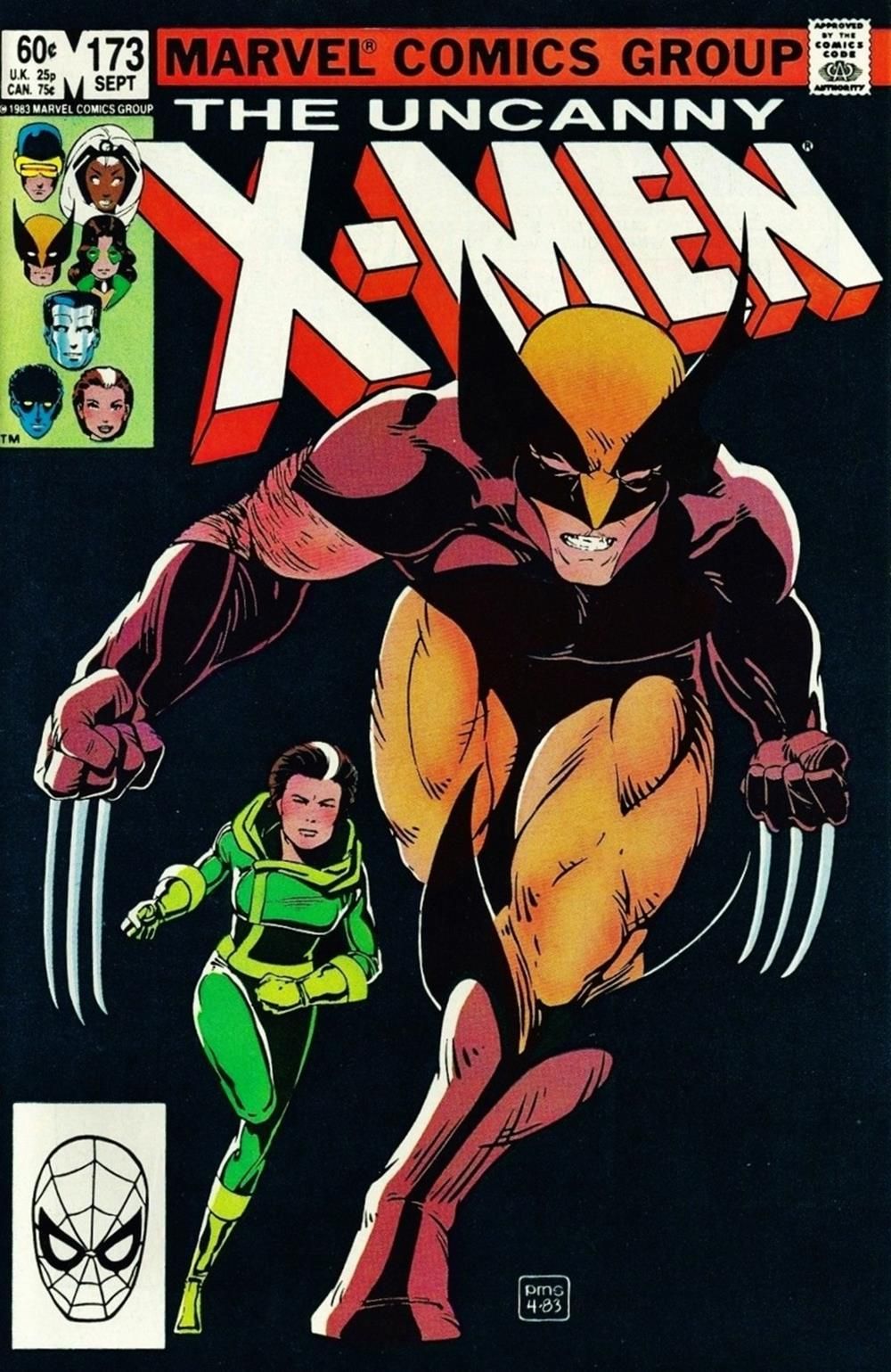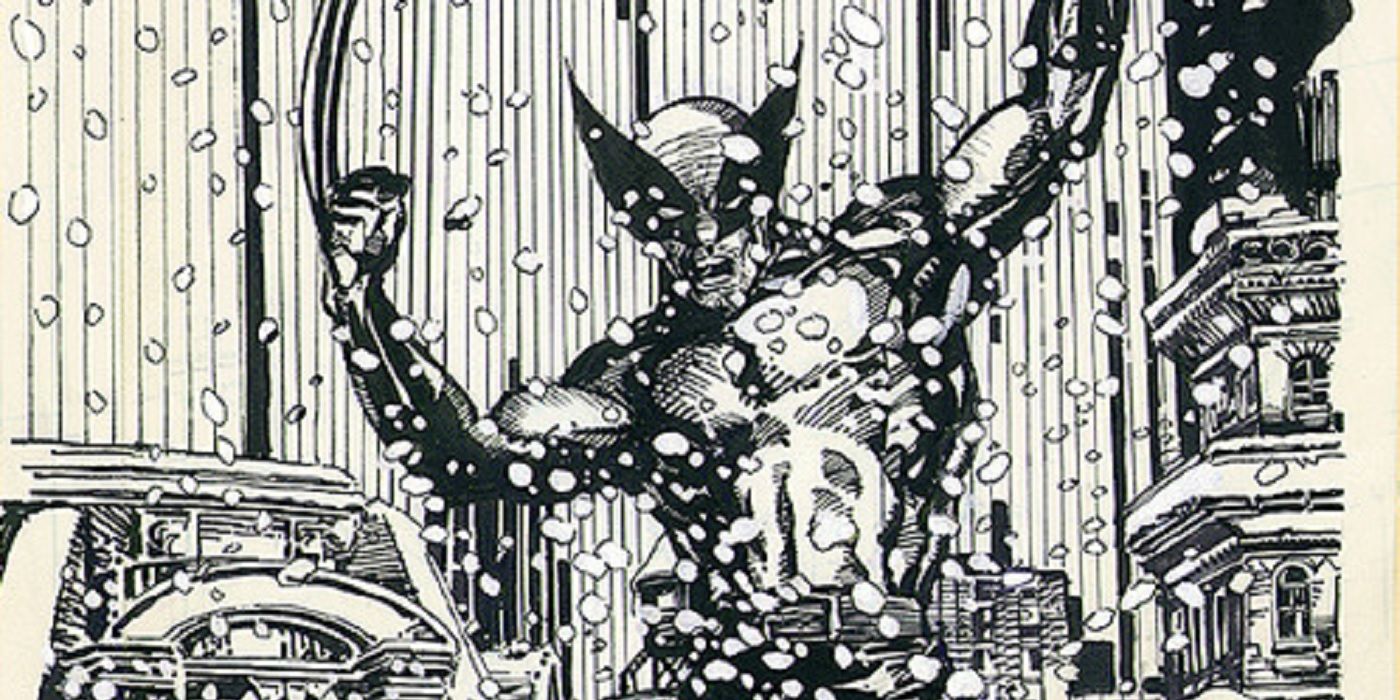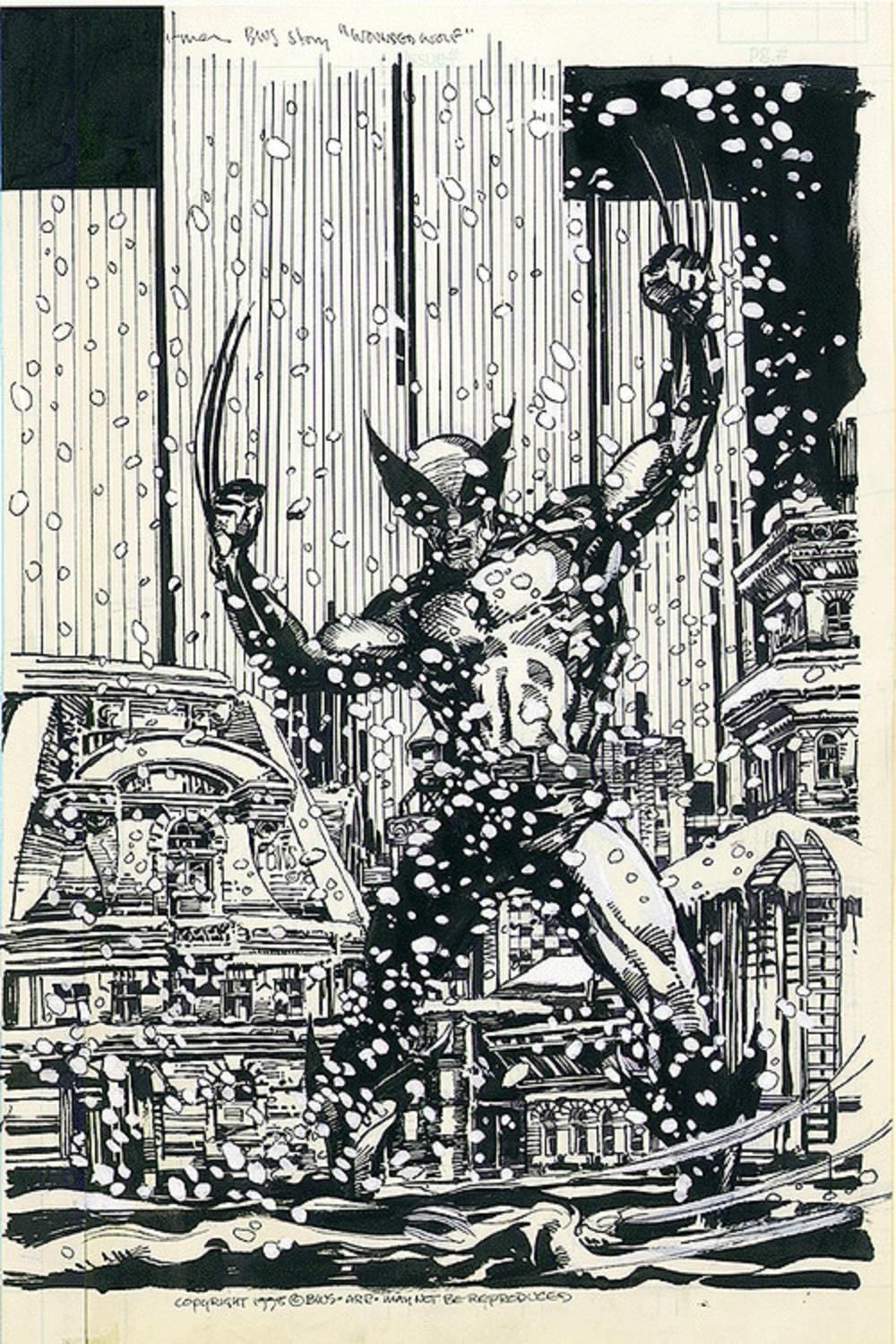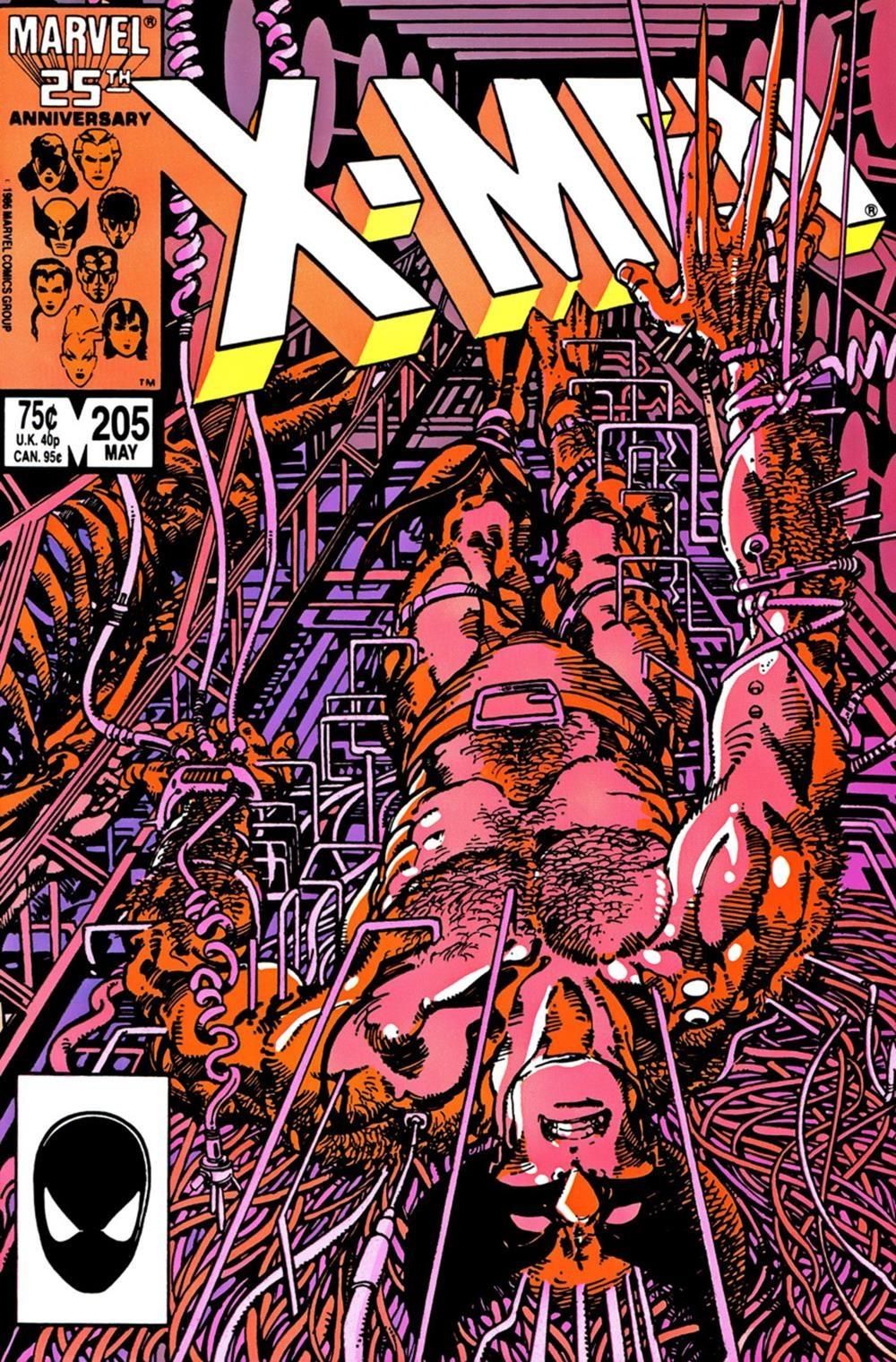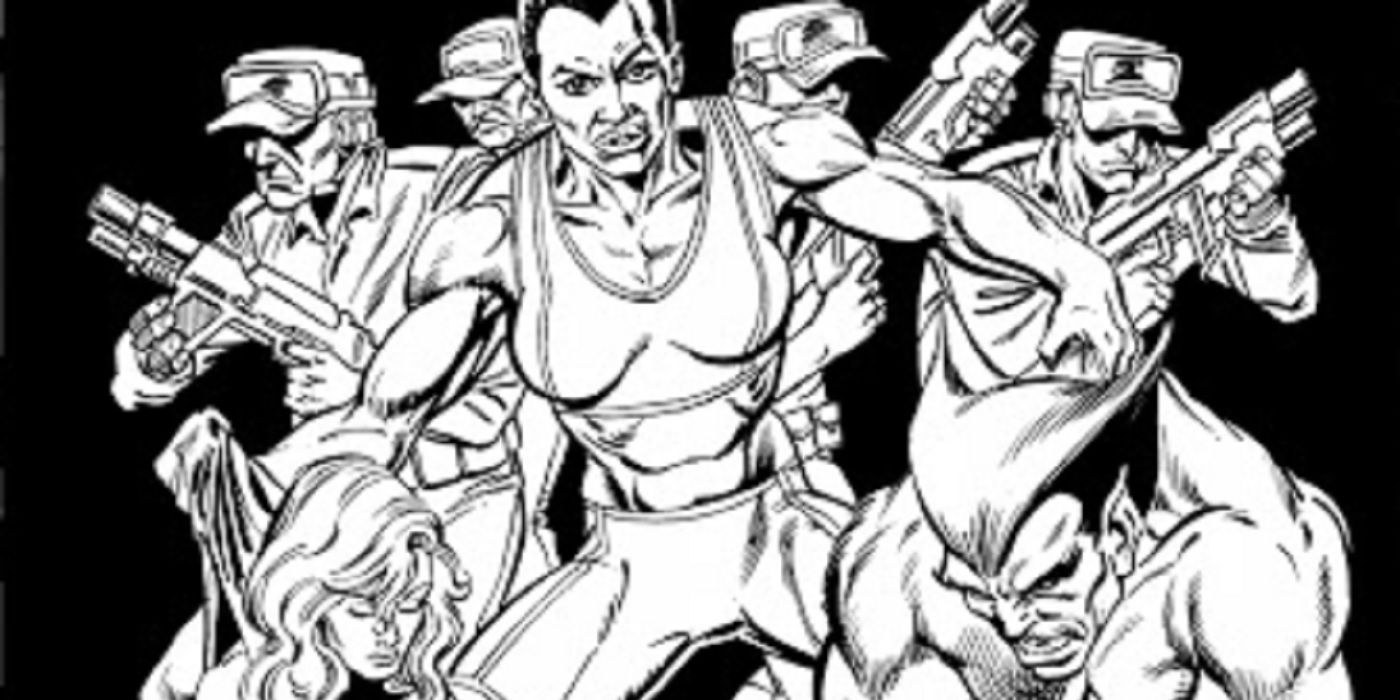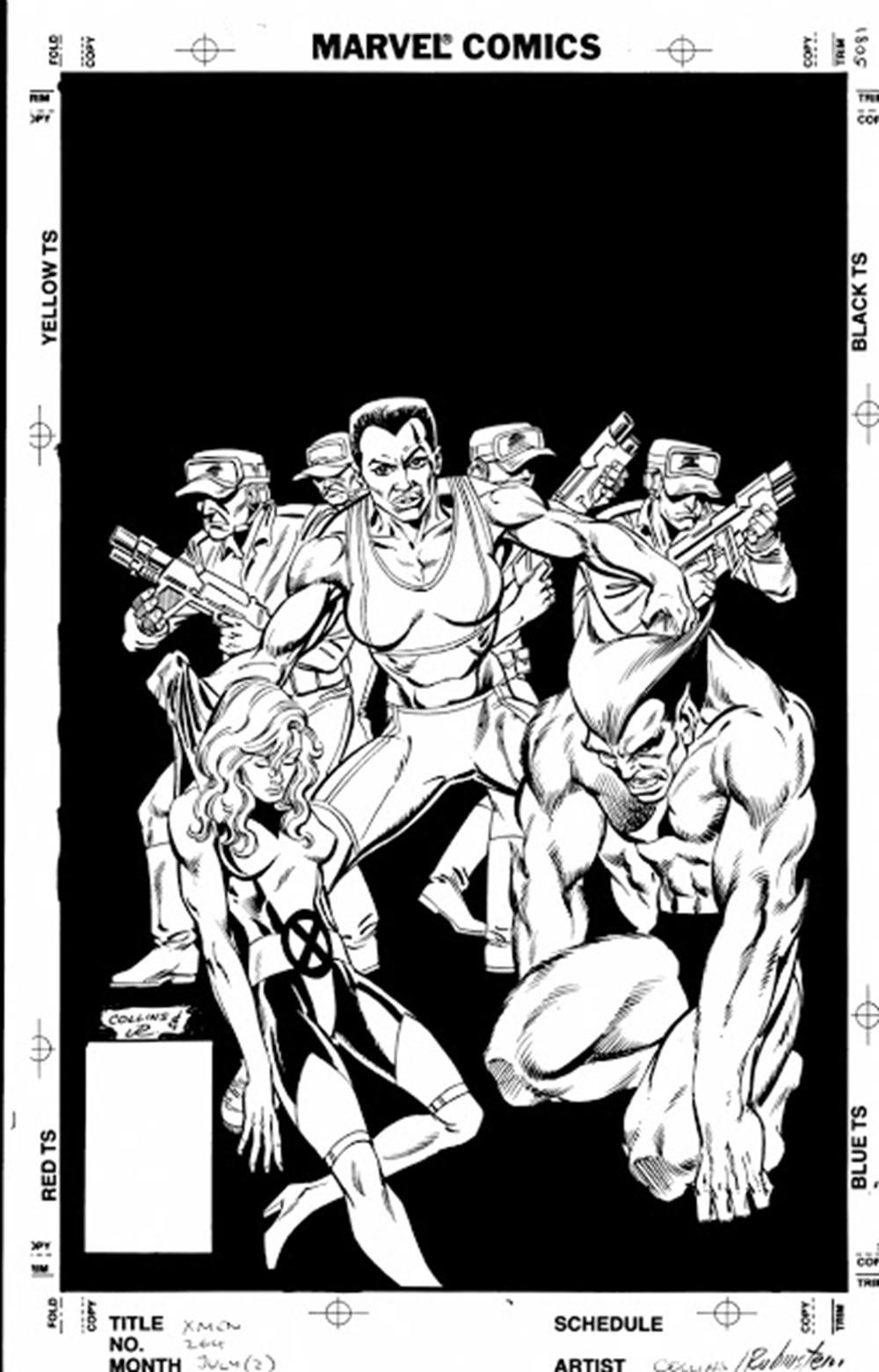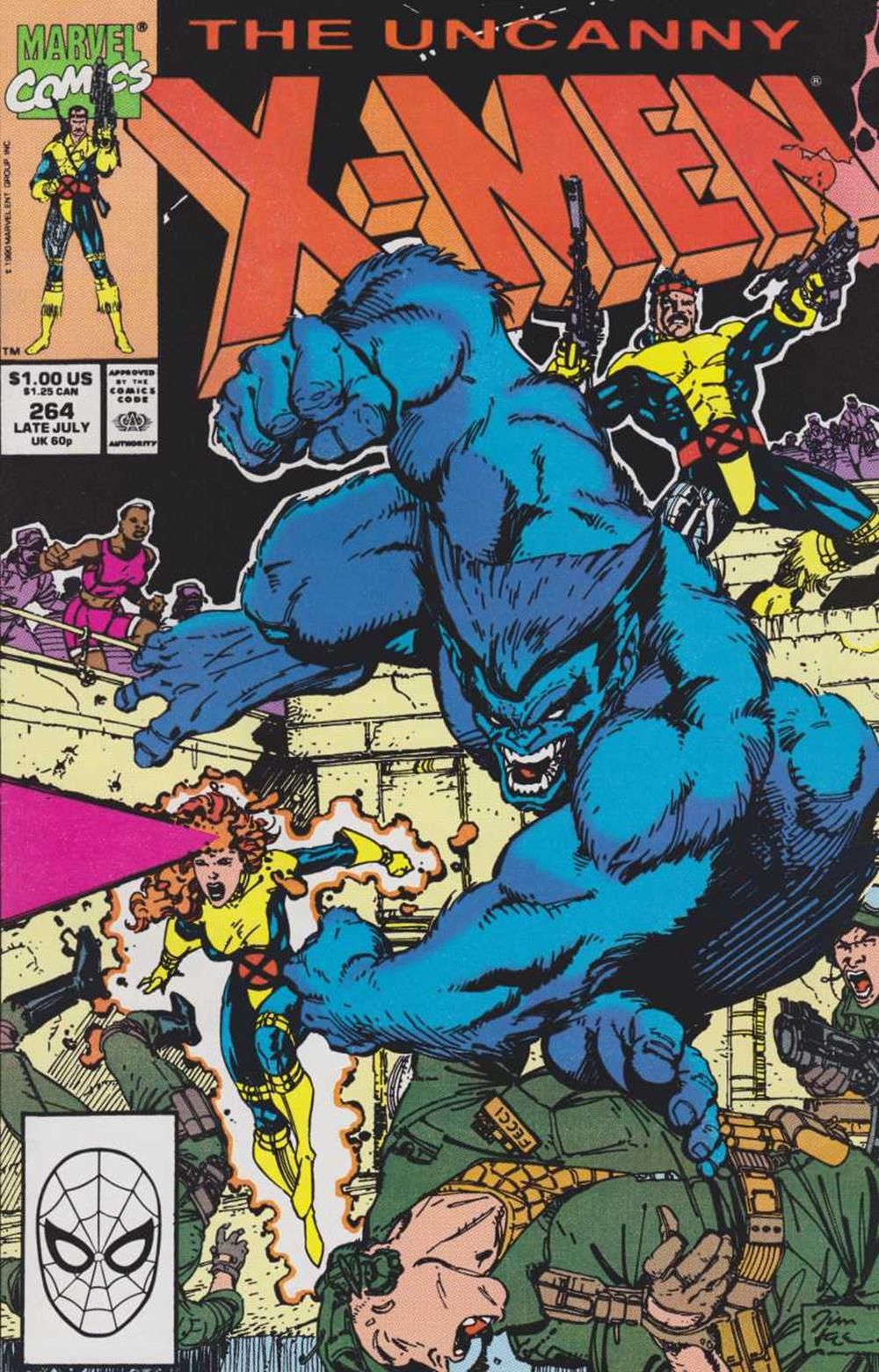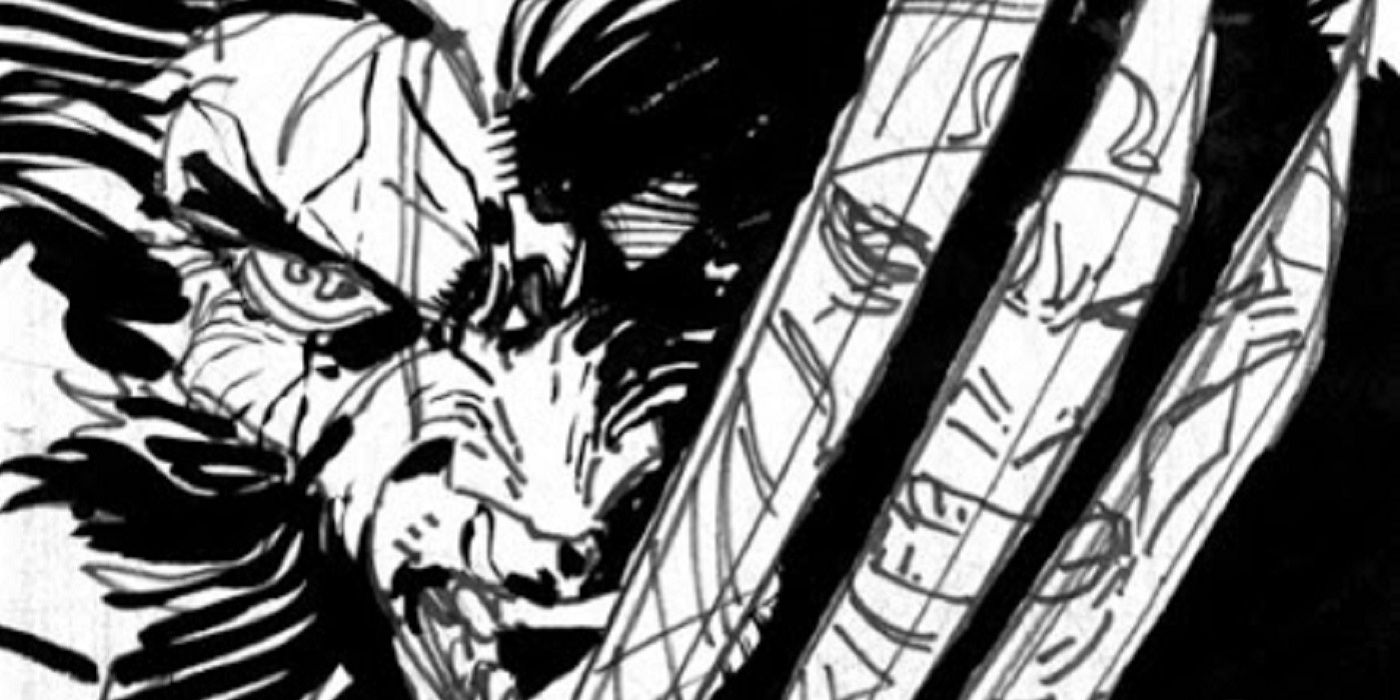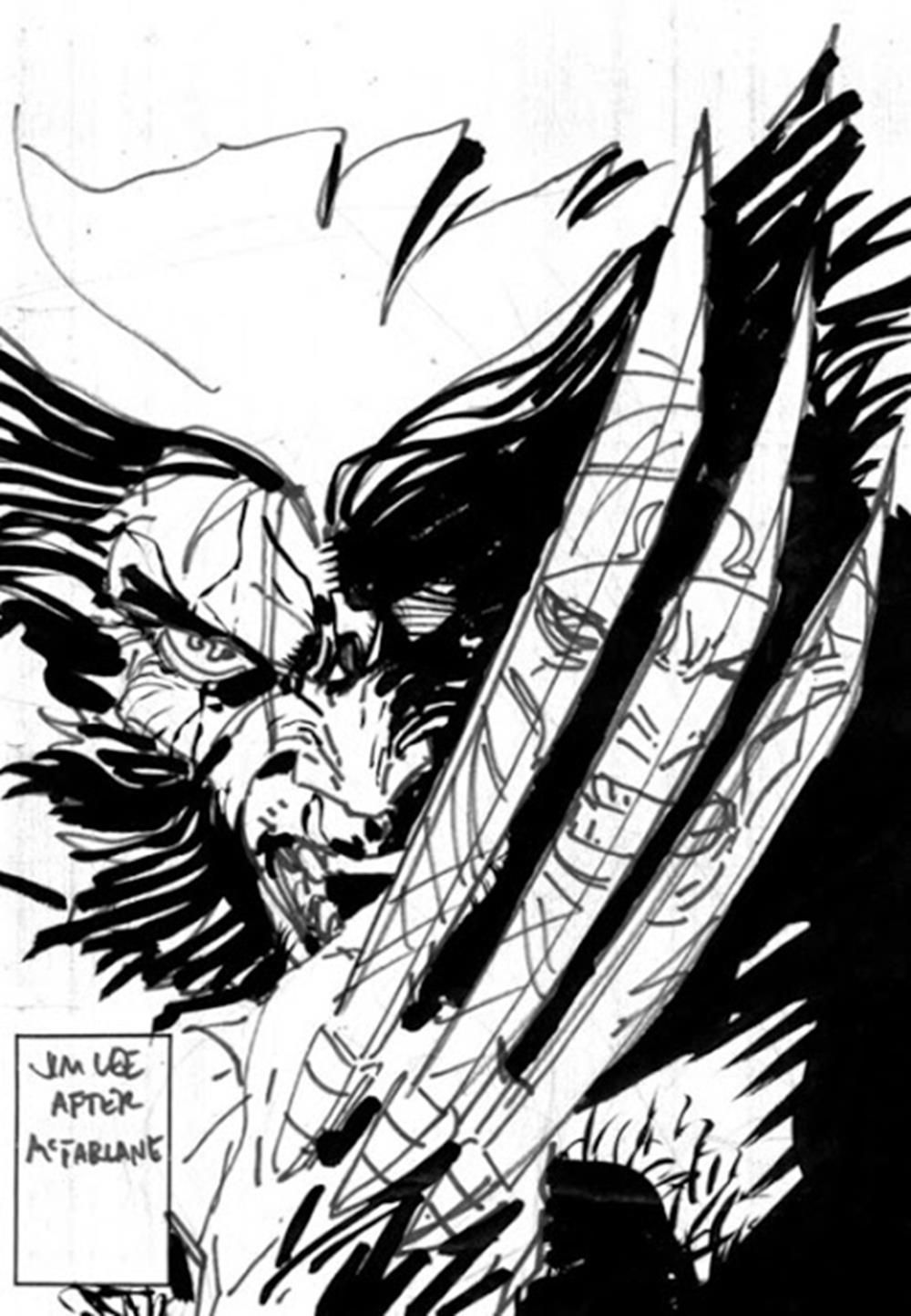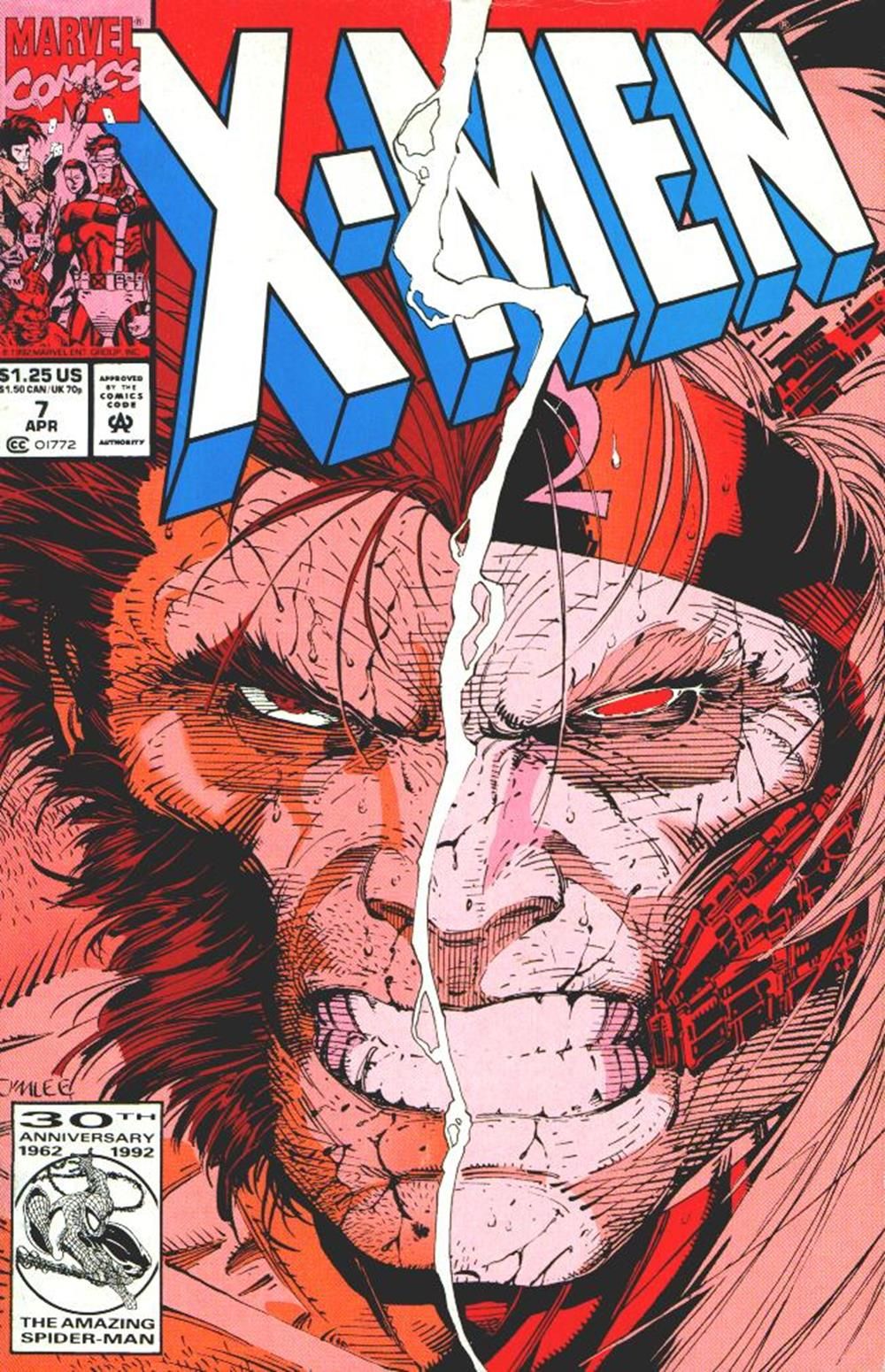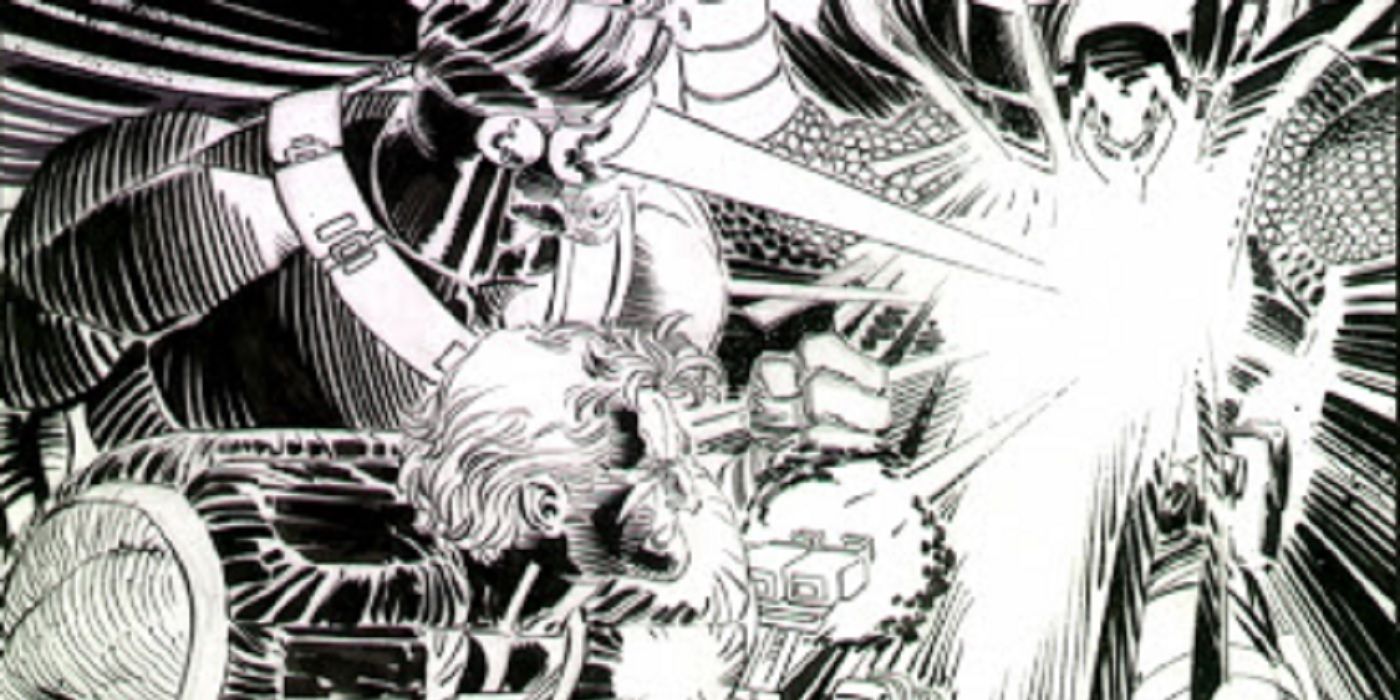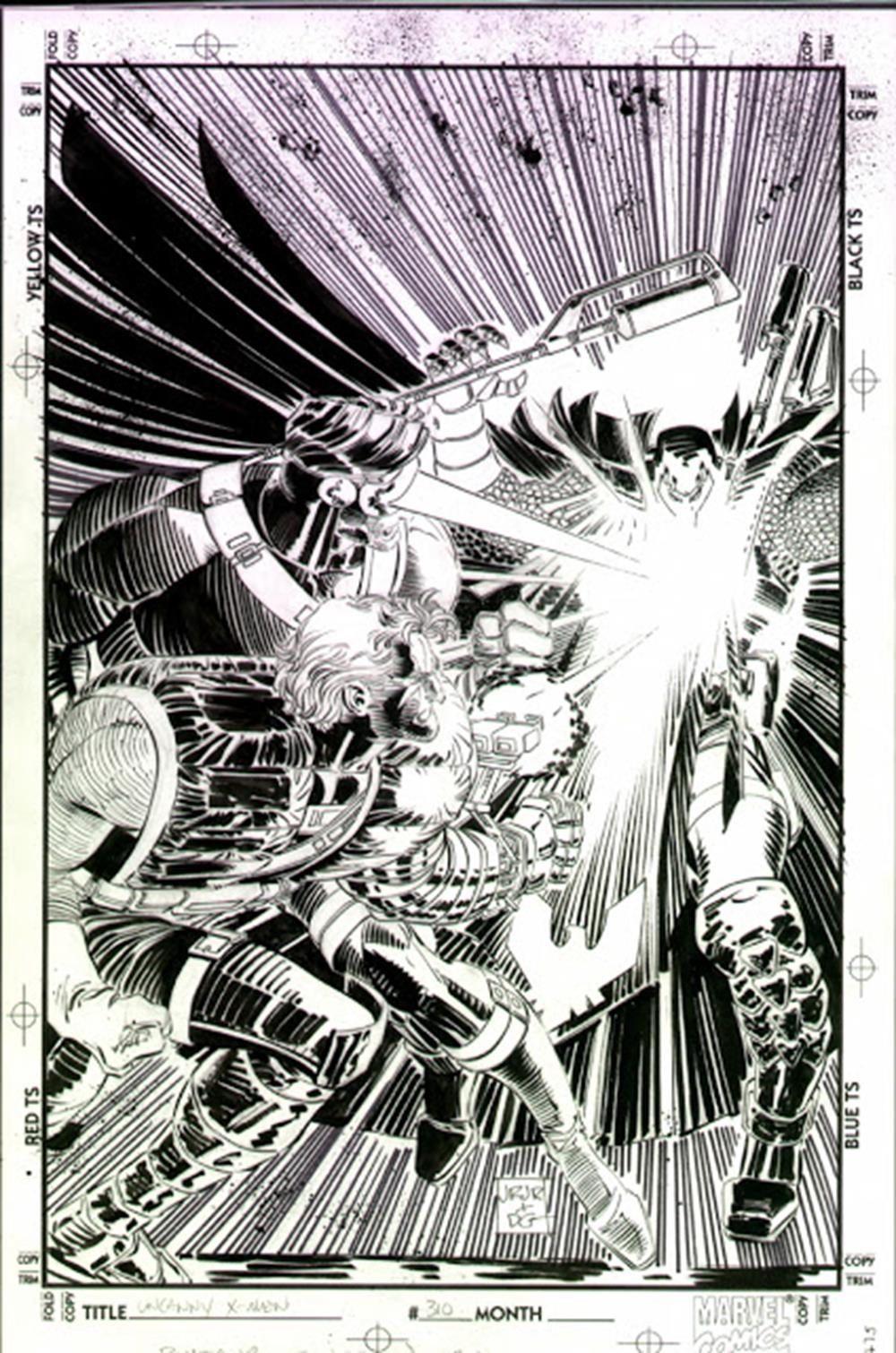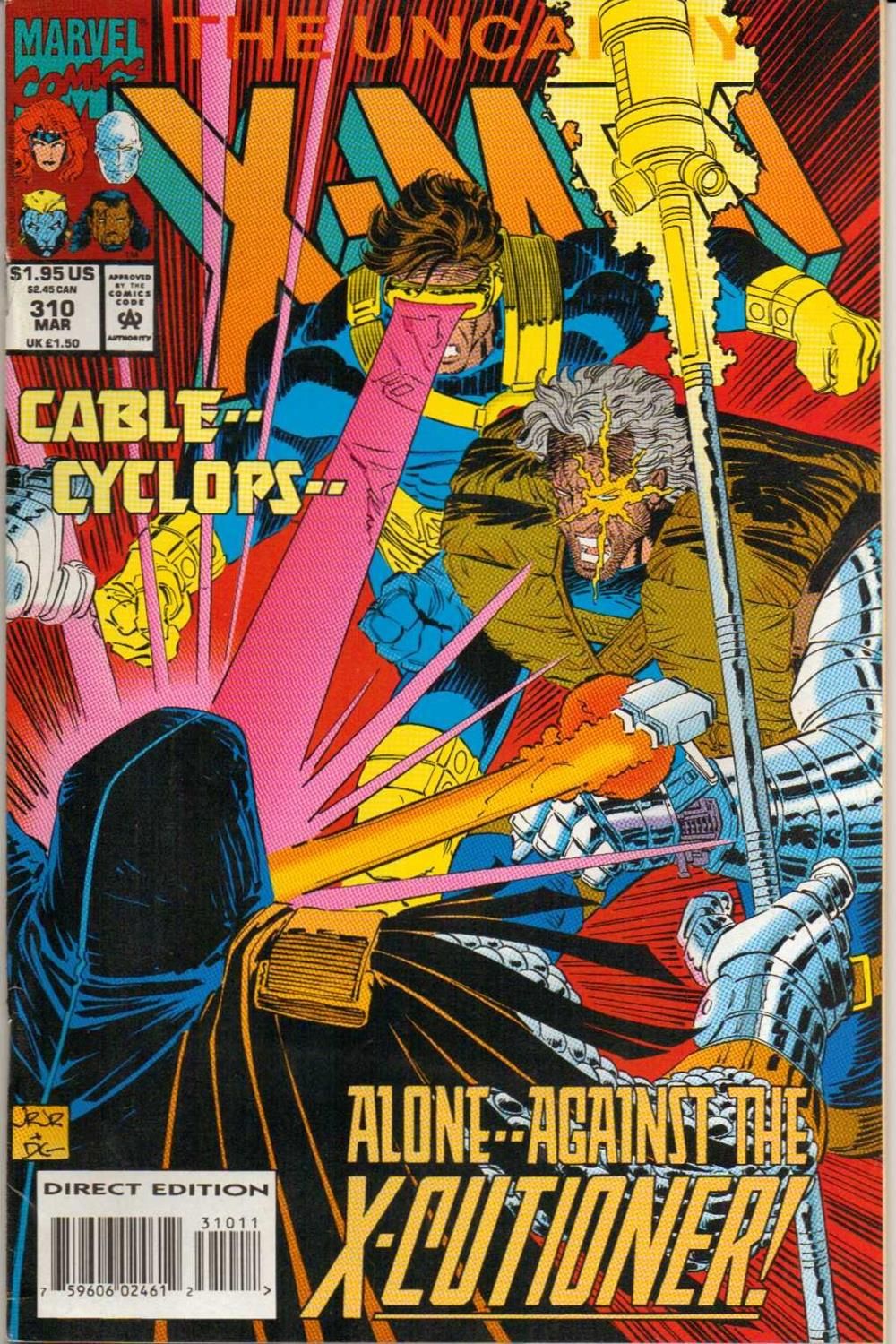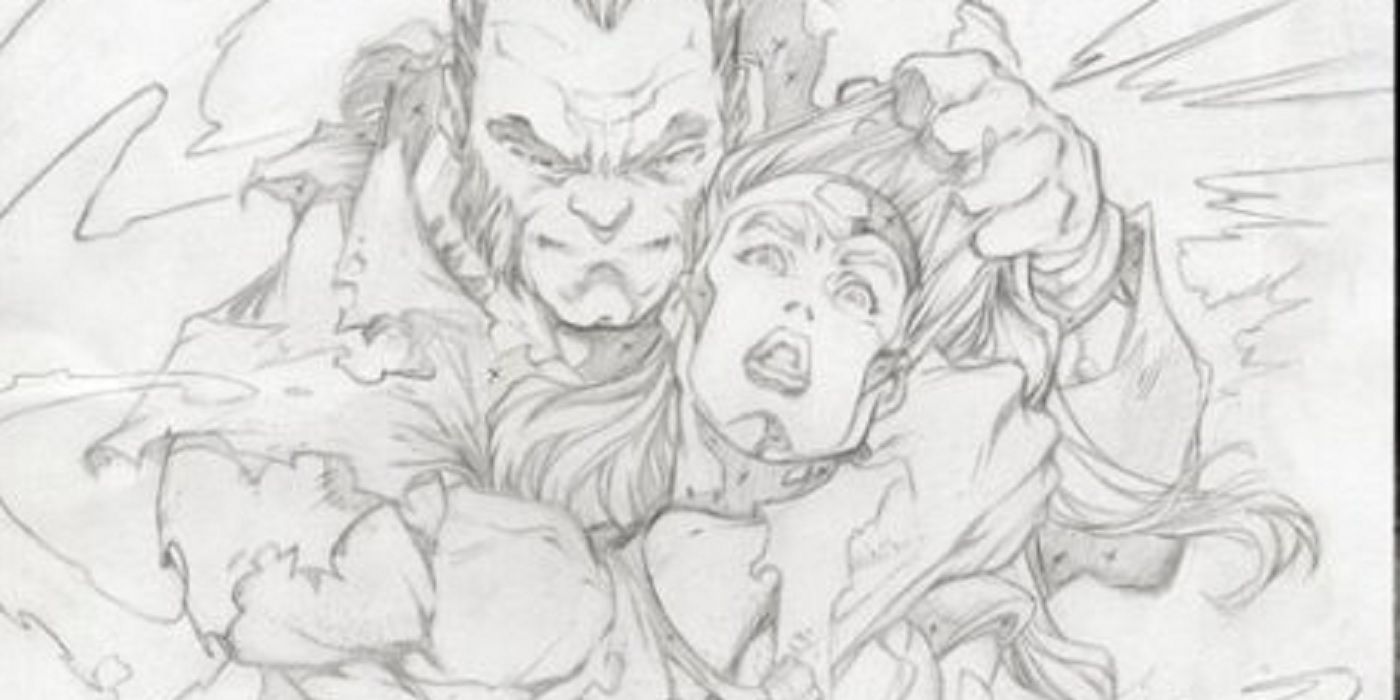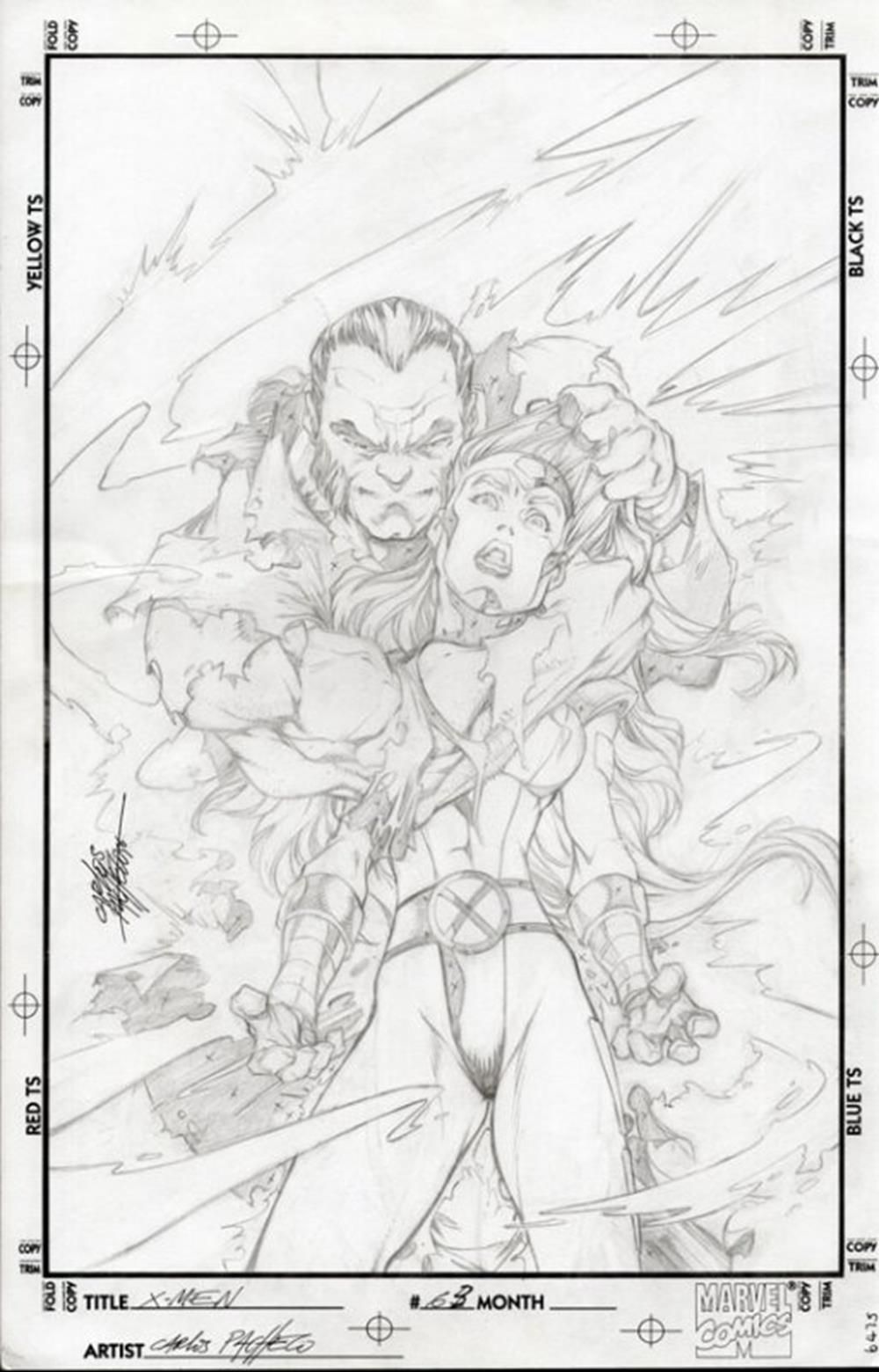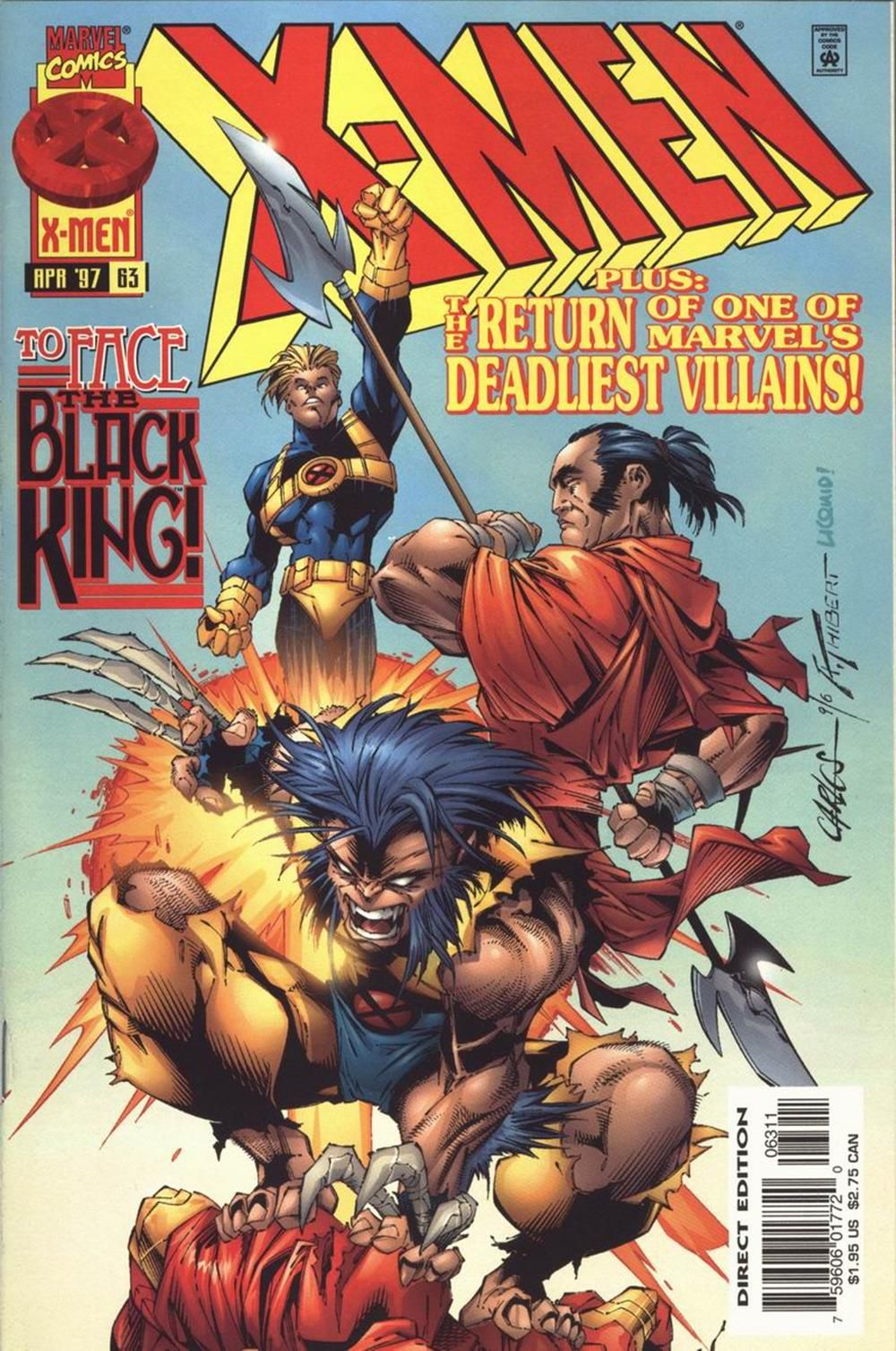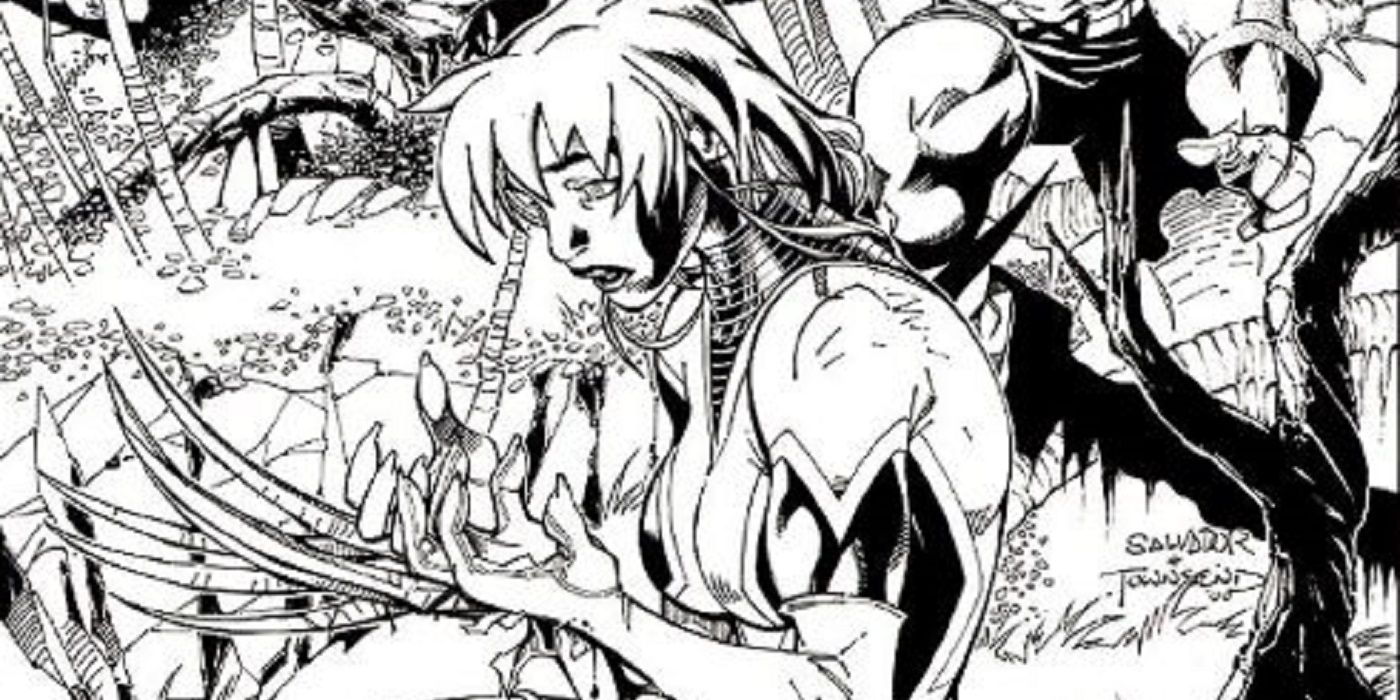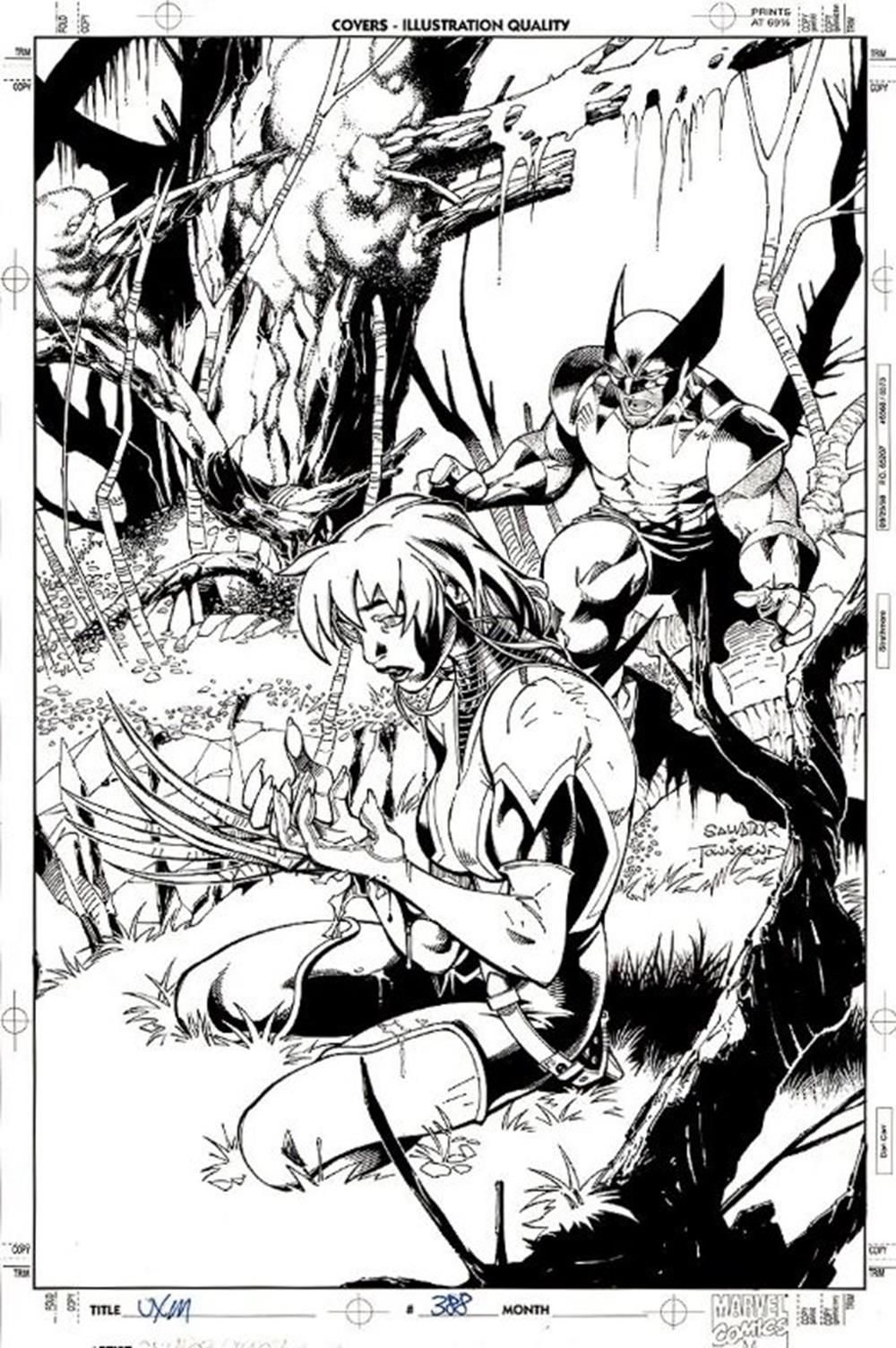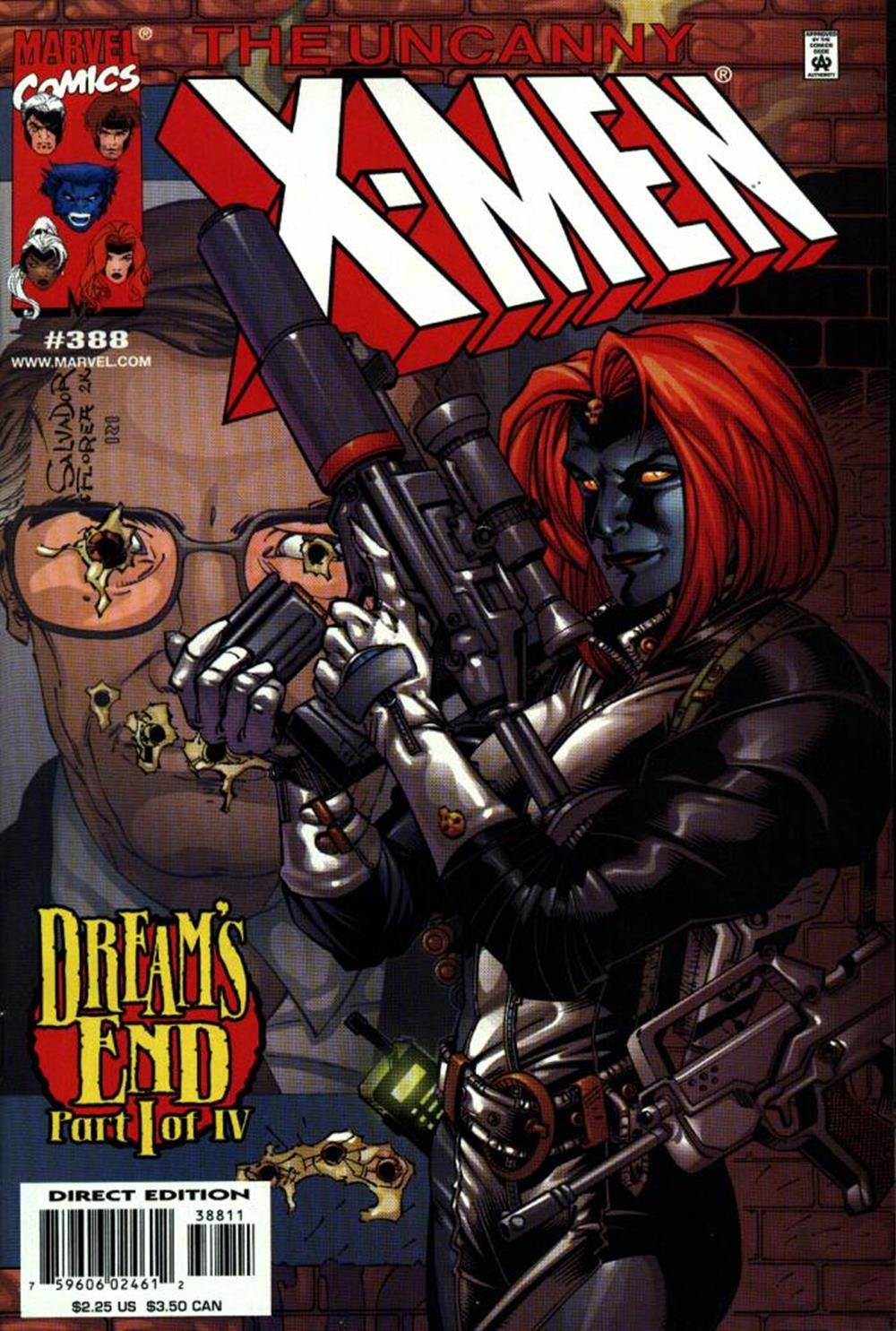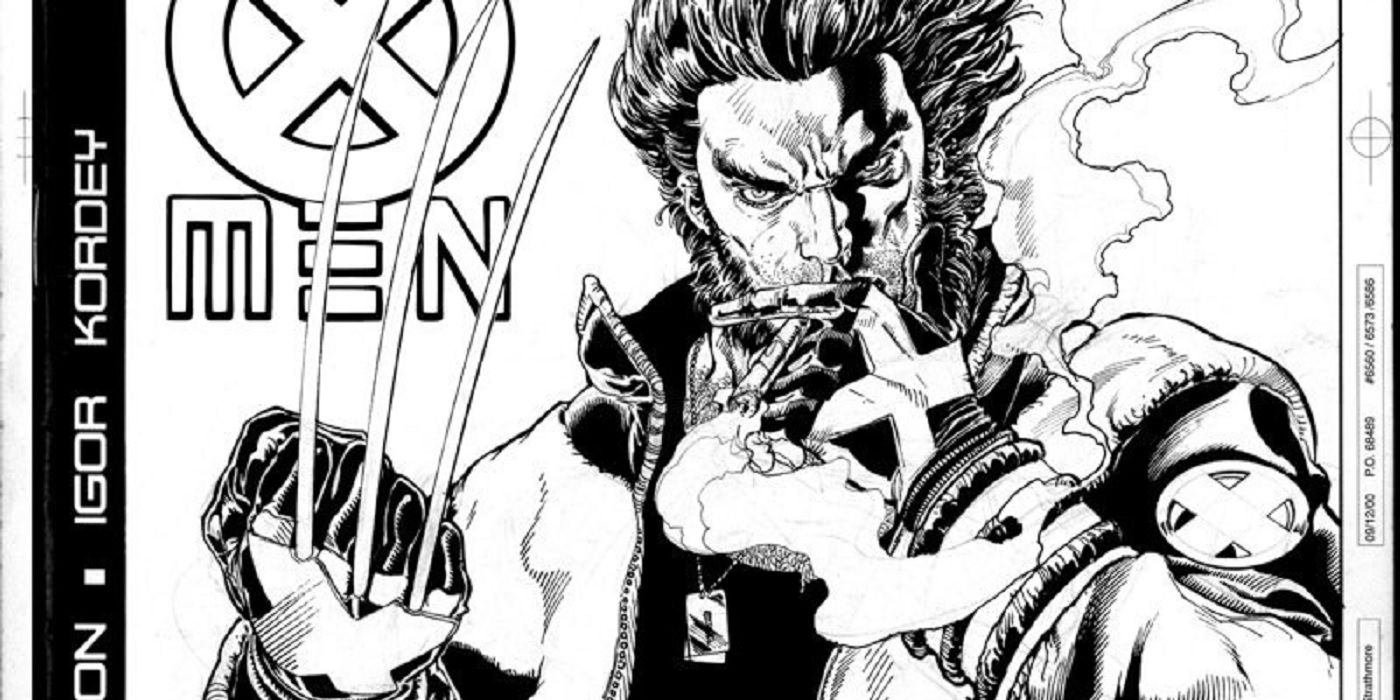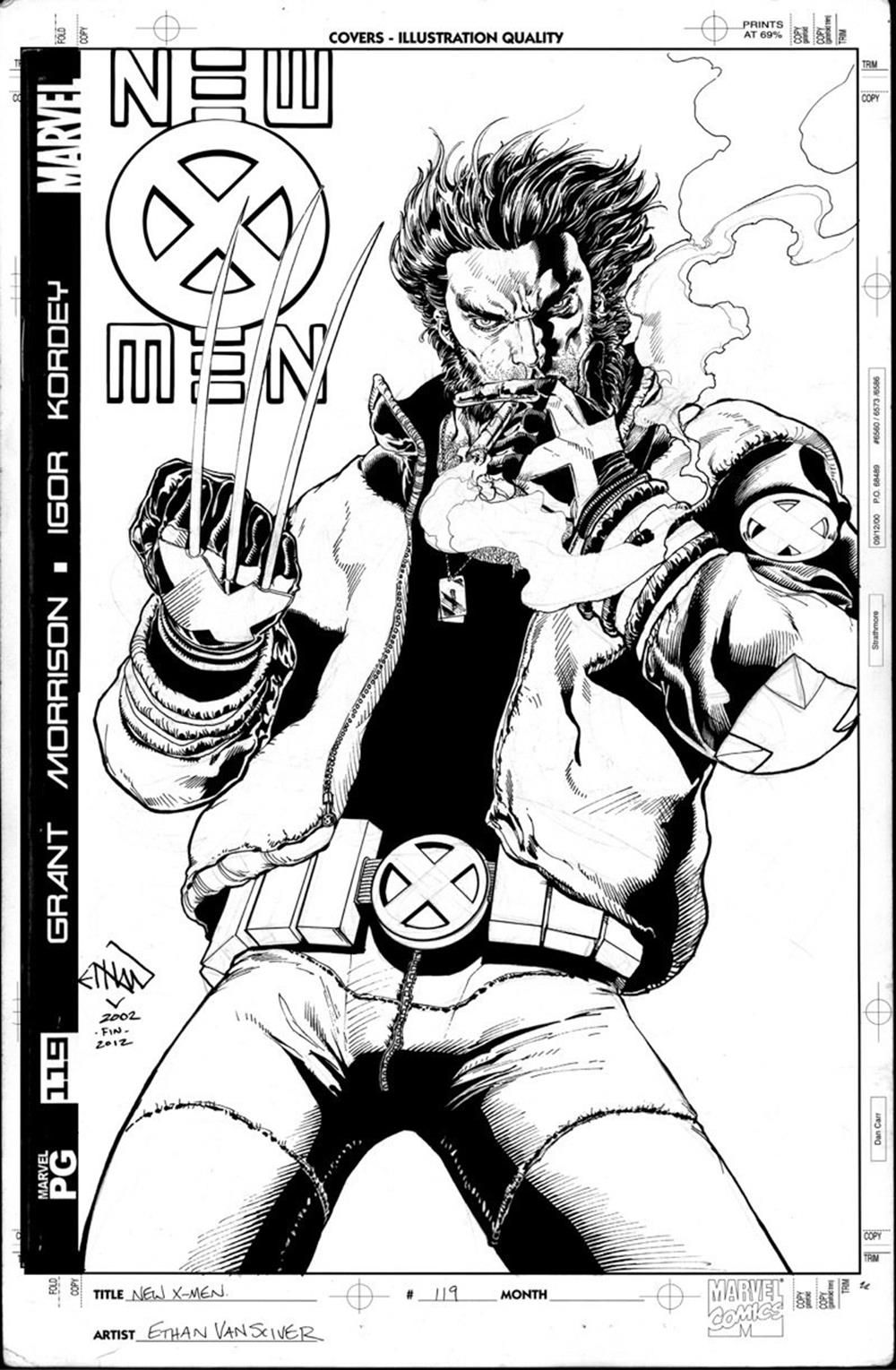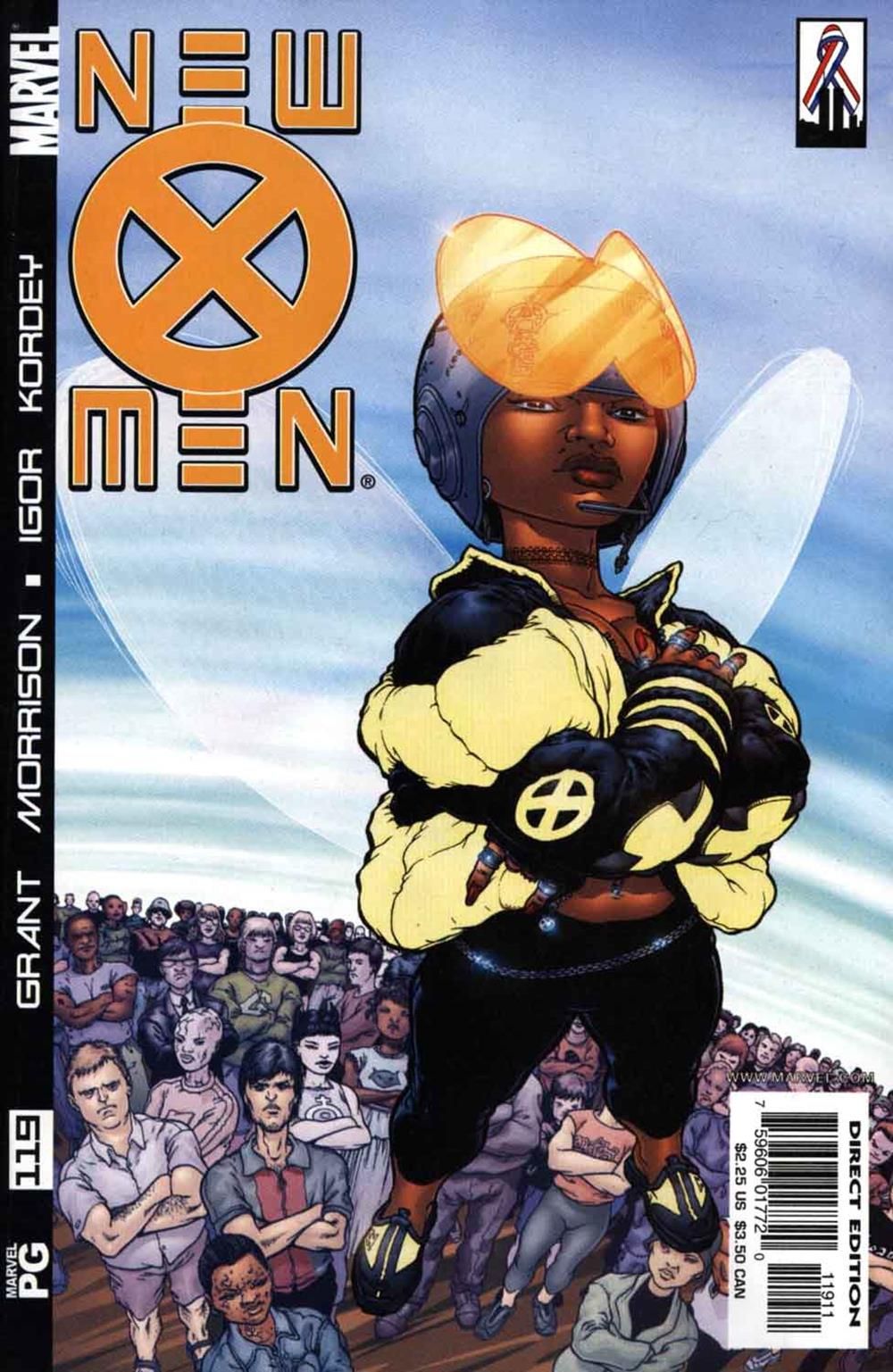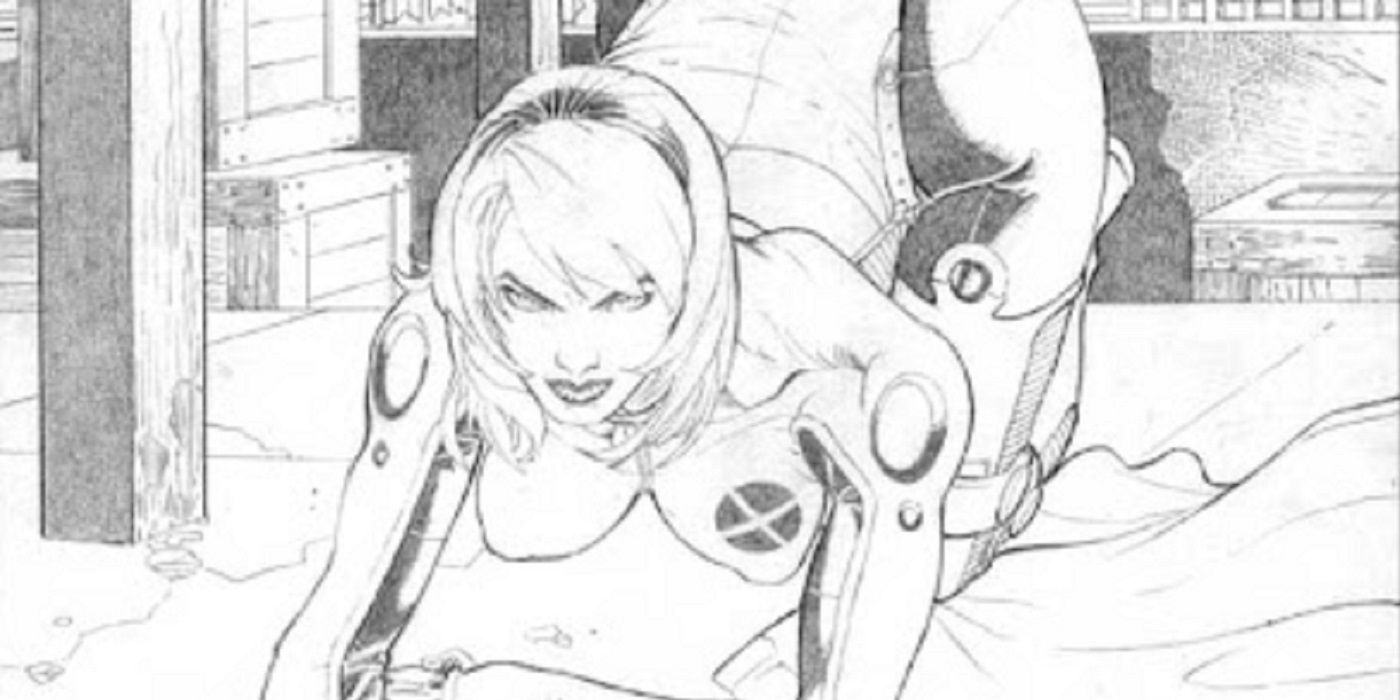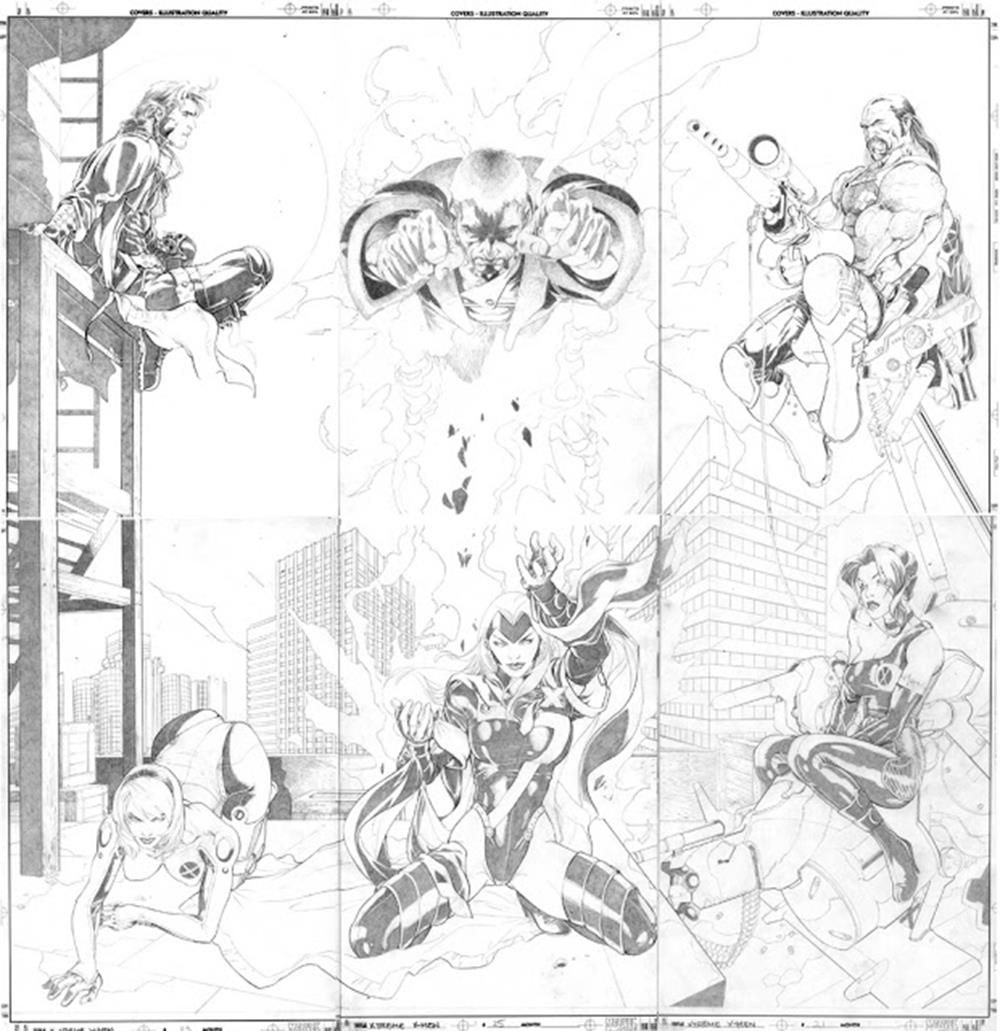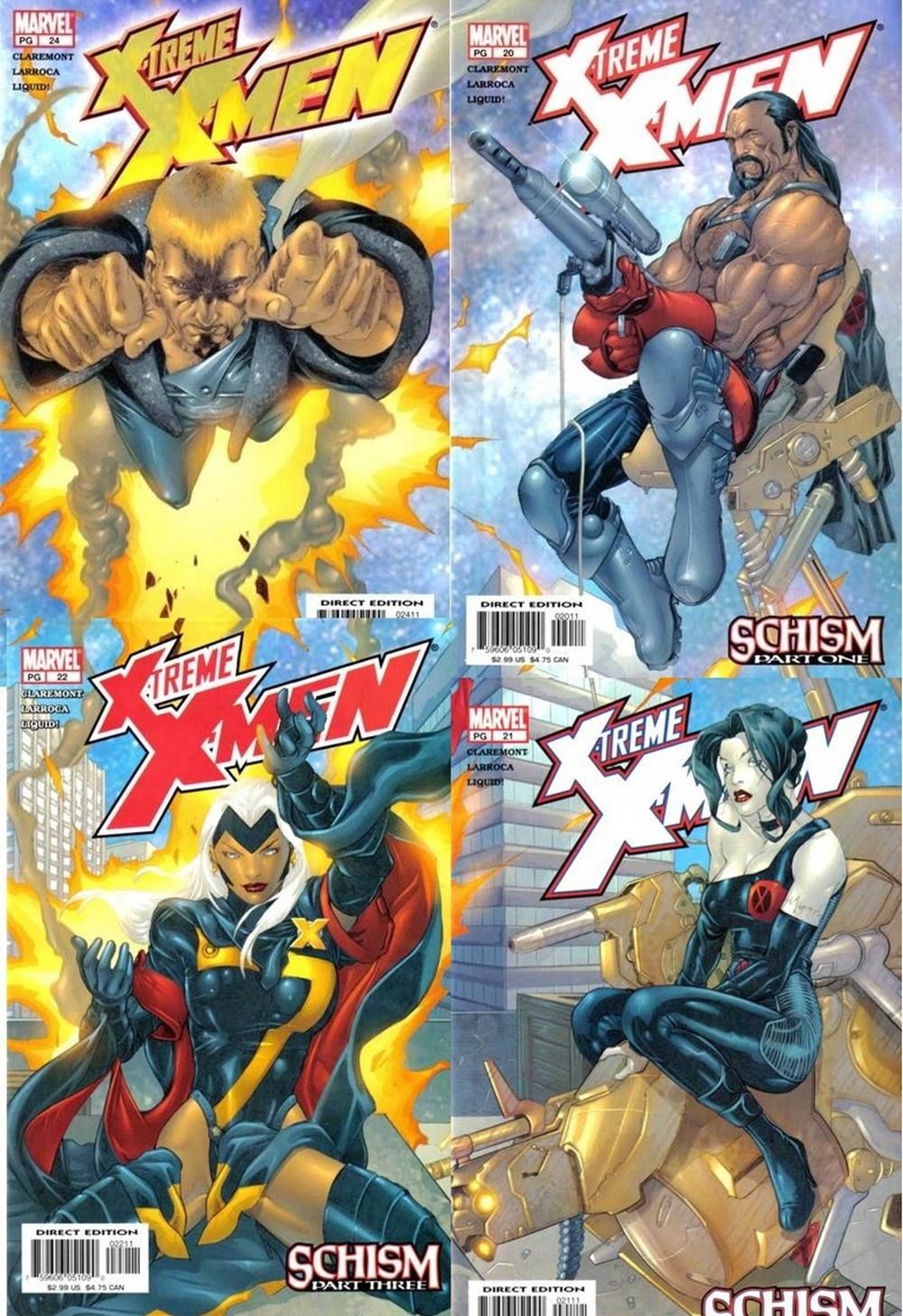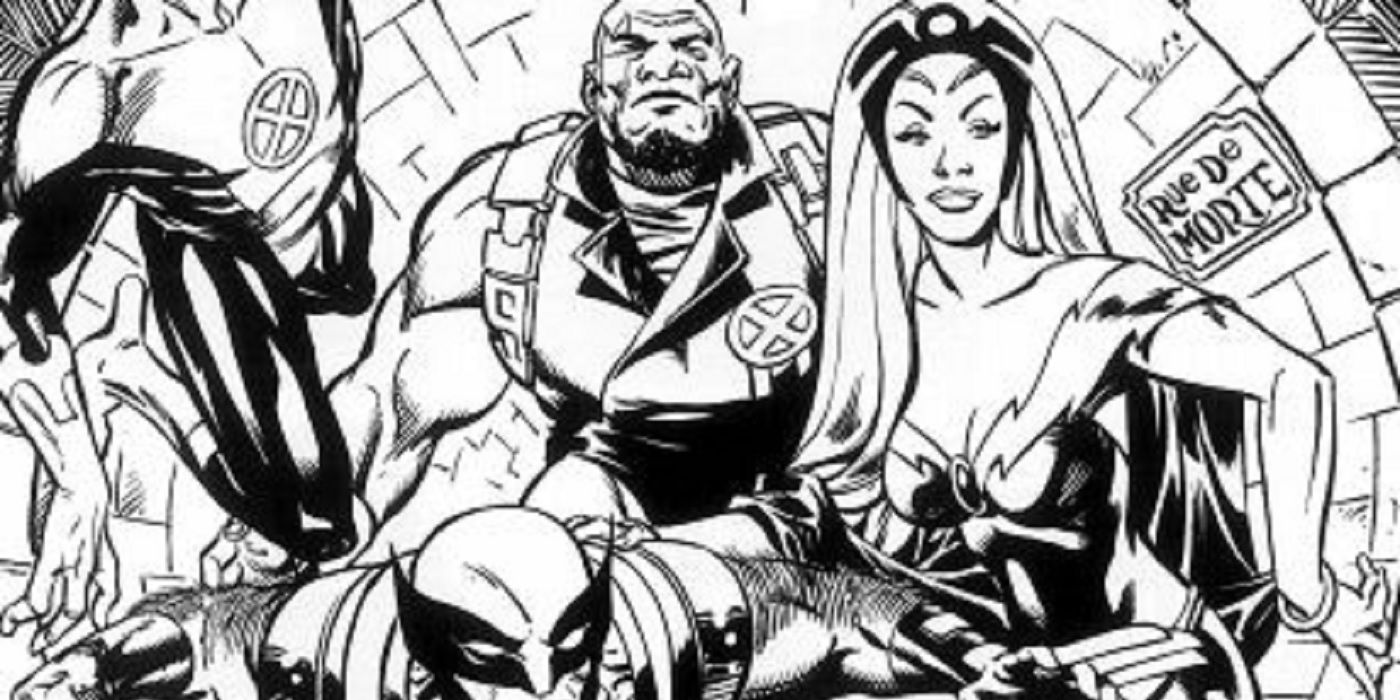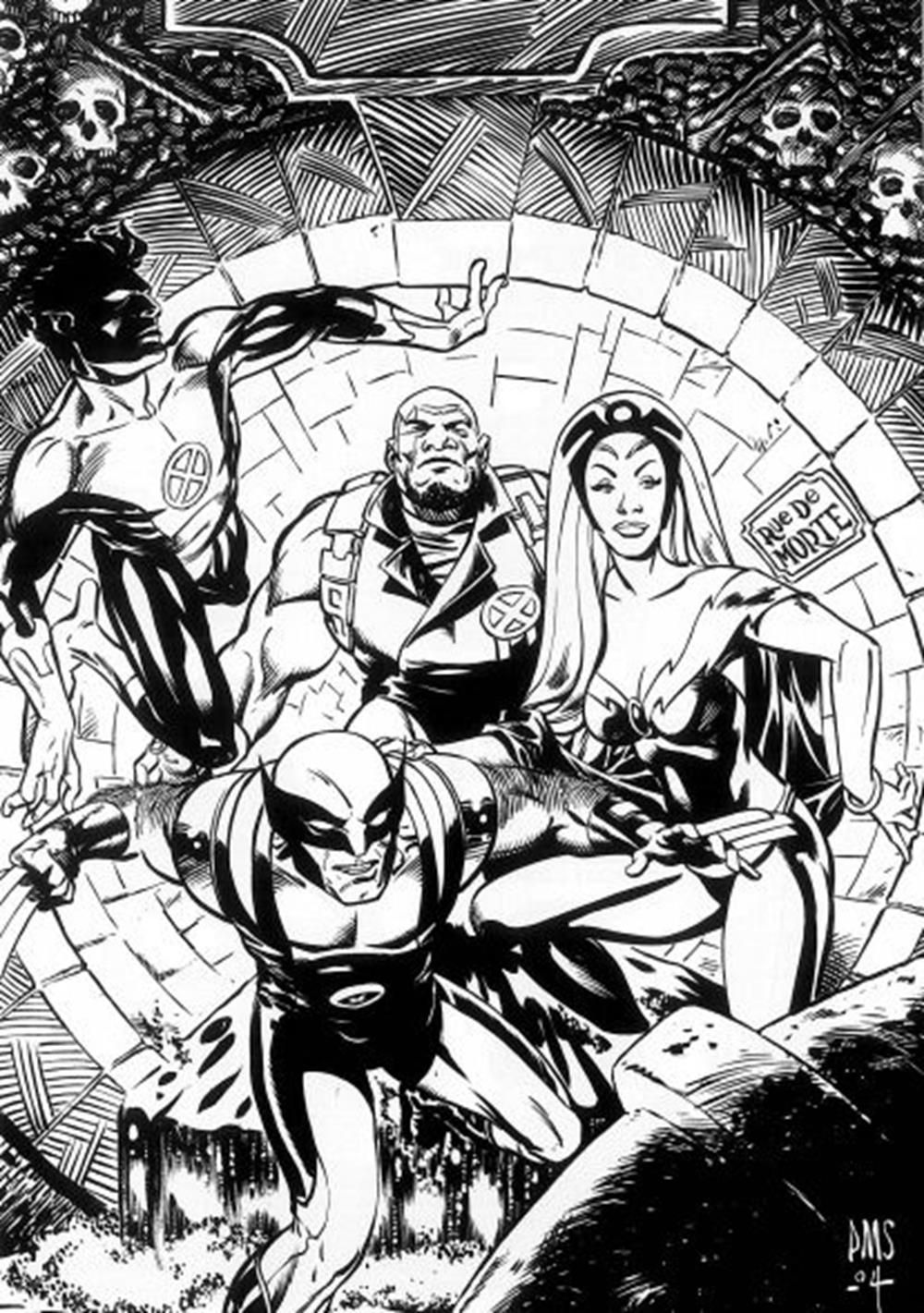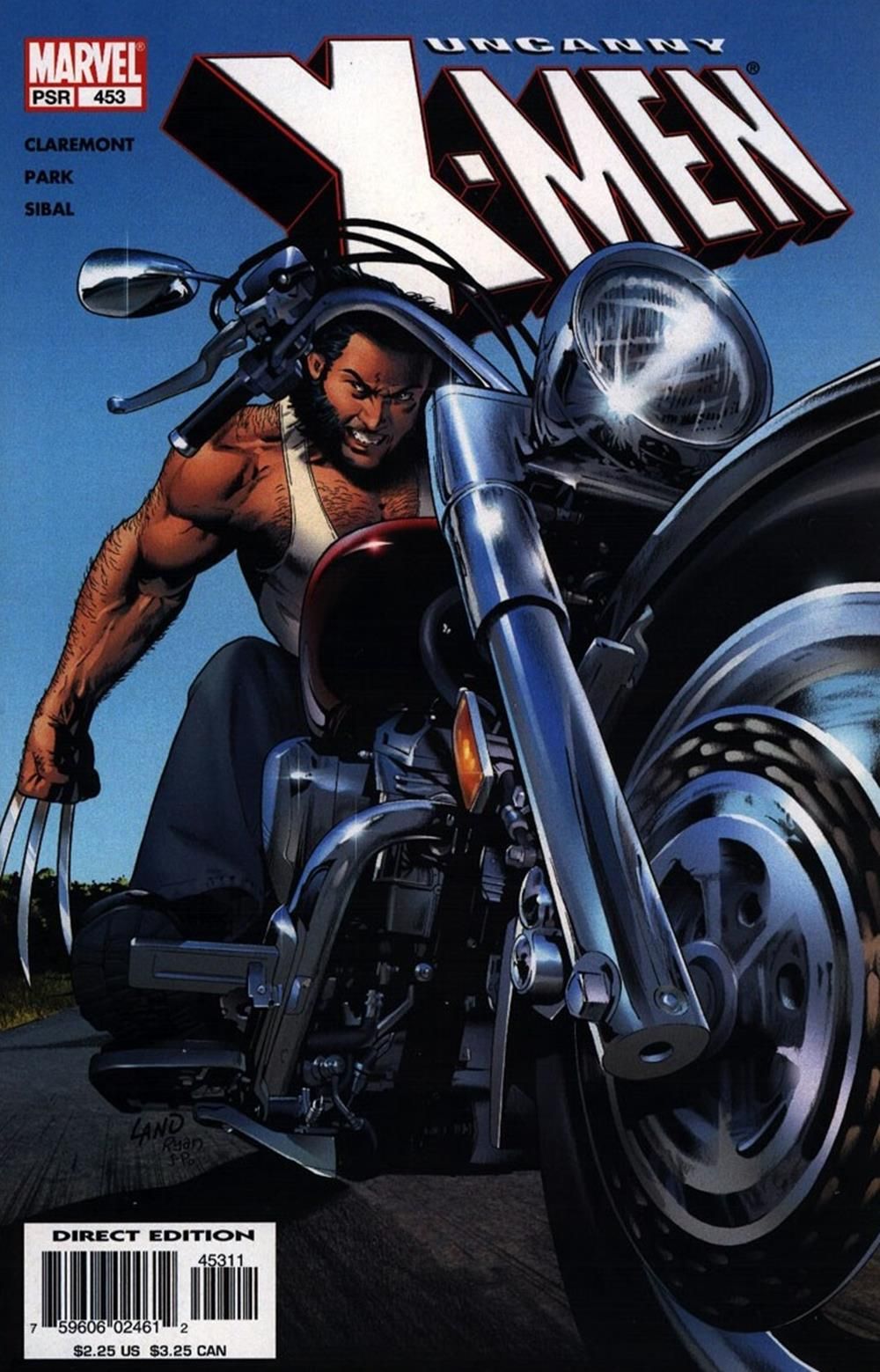The art of cover design has changed a lot over the years. In the early days of Marvel Comics, Editor-in-Chief Stan Lee and Publisher Martin Goodman tended to take an extra keen eye towards covers, as all comic book companies tended to really worry a lot about covers back in the days when you had to compete with a bunch of other comic books on the newsstand, all hoping to get those 12 cents from the reader. Therefore, early Marvel Comics covers tended to get edited frequently.
RELATED: The 15 Best X-Men Costumes
As the years went by, artists tended to gain a little more control over their covers, but you would still see covers rejected on occasion, for one reason or another. Here, we have collected 15 examples of "X-Men" covers that were rejected, paired with the covers that eventually were published in their place. Thanks to Chris Haizlip's "Unpublished X-Men" for a number of these covers.
15 X-MEN #10
When the estate of Jack Kirby sued Marvel Comics a few years back over the copyrights of the characters that Kirby had co-created for Marvel along with Stan Lee, one of their key arguments (and likely the one that led to Marvel to settle rather than risk seeing the Supreme Court agree with Kirby's estate on this point and see the entire "work for hire" industry thrown into chaos) was that when Jack Kirby drew something and Marvel rejected it, like his original cover for "X-Men" #10...
Marvel would not pay Kirby for the work he did on the unused cover, only when the cover was re-drawn, like Kirby did with the published cover of "X-Men" #10, with Lee or Goodman likely wanting to see Ka-Zar spotlighted in greater detail on the cover, as this was Ka-Zar's reintroduction into comics (after appearing in some Golden Age comics for Marvel).
Therefore, Kirby's estate argued that if Kirby was truly doing "work for hire," then he would be paid for everything he drew, not just what was accepted. Since they only paid for what they accepted, they were thereby treating Kirby as a freelancer, not as a "work for hire" employee.
14 X-MEN #33
One thing about comic book covers that is as true today as it was back in the 1960s was that there were certain artists who have always been seen as having greater appeal to consumers, so their covers are used more often than the actual artists who are drawing the interior of the comic book. Artists like Brian Bolland, Marko Djurdjevic and Adam Hughes have made whole careers out of supplying coves to books that they otherwise had nothing to do with. One of Marvel's go-to cover artists in the late 1960s was the great Gil Kane, who was brought in to draw a new cover instead of Werner Roth's rejected one for "X-Men" #33.
However, another big issue in the 1960s was the Comics Code, which would squelch elements that they thought were inappropriate on comic book covers, so Gil Kane's cover ran into trouble as the Outcast was deemed too horrific to be allowed on to a comic book cover.
So Kane had to do a new cover, and this time he basically merged Roth's cover with his own to form the published cover to "X-Men" #33....
Note that Kane literally used the heads of Cyclops and Marvel Girl from Roth's cover.
13 X-MEN #56
An element of comic book history that very few modern fans are familiar with is something that was considerably more important back in the old days than it is now, namely the top of the comic book cover. When comic books were primarily displayed in spinner racks or on newsstand shelves (where books would be staggered on top of each other), very often the only thing that would be visible would be the very top of the comic book cover. Therefore, a "rule" developed where you could not obscure the title of the comic book, as you would be hurting yourselves when it came time to display the book. This was the reason why Neal Adams' dynamic cover for "X-Men" #56 was initially rejected...
The X-Men draped over the logo were considered too distracting. So Adams simply eliminated the figures from the logo and placed them lower on the cover, while keeping the basic dynamic centerpiece of the cover...
You might recognize the layout of the cover, as John Byrne famously homaged this cover during the "Dark Phoenix Saga."
12 UNCANNY X-MEN #142
Amazingly enough, one of the most famous "X-Men" covers of all-time almost didn't happen! The original cover art for the final part of "Days of Future Past" (which was also the first issue to technically be "Uncanny X-Men," as the book was officially titled "X-Men" up until this point) was by John Byrne.
However, for whatever reason (there was a rumor once that the artwork for Byrne's cover was delayed in the post on its way back to Marvel, so they freaked out and got another cover made - Byrne once noted that it appeared to be just editorial fiat to him), the inker on the issue, Terry Austin, quickly drew a new cover for the book. Austin took a panel from inside the comic and basically blew it up and made it the cover and it became one of the most iconic "X-Men" covers of all-time.
Since Byrne did not draw the next issue's cover (his final issue of "Uncanny X-Men"), this would have been his final "X-Men" cover.
11 UNCANNY X-MEN #169
A little-known aspect of "X-Men" history is that while the sales of "X-Men" consistently increased during the famous Chris Claremont/John Byrne/Terry Austin run on the book, sales continued to go up after Byrne left (most likely in response to their great streak of issues at the end, from "Dark Phoenix Saga" to "Days of Future Past"), as there is often a bit of a delay in how sales work on comics, where they go up in response to past events (sort of like how baseball teams sell more tickets the year after they win the World Series). However, it was not until Paul Smith replaced Dave Cockrum (who had returned to the series after Byrne left) that sales really skyrocketed. It was during Smith's run that "Uncanny X-Men" became Marvel's highest-selling monthly title.
In a storyline that introduced the Morlocks to the series, Smith's original cover, showing the X-Men discovering the captured Angel, was rejected...
The published cover took a much starker approach to the design, with a different view of the captured Angel from above...
The end result was a very strong cover.
10 UNCANNY X-MEN #173
While he helped make "Uncanny X-Men" the massive sales success that it remained for many years, Paul Smith's run on the book really was not particularly long. He was on the book for just a single year, drawing "Uncanny X-Men" #166-175 (and even there, incoming artist John Romita Jr. drew half of "Uncanny X-Men" #175). One of the last issues that he drew for the series was the classic journey to Japan for Wolverine's wedding. Most of the team was knocked out of commission due to being poisoned at Wolverine's rehearsal dinner. Only Wolverine (due to his healing factor) and Rogue (due to her having Ms. Marvel's powers) could stop the bad guys. Up until a few issues earlier, Rogue was a villain, but now she was a member of the X-Men and Wolverine had to learn to trust her (after she sacrificed herself to save him, she earned his trust). Smith's original idea for the cover was a bit more playful...
It is unclear who decided to go against that approach, but the published cover had a more serious design...
It became one of the most iconic Wolverine covers of all-time.
9 UNCANNY X-MEN #205
After becoming a superstar artist when he was given the assignment on "Conan the Barbarian" with writer Roy Thomas (Marvel did not think that the title would succeed, so they insisted on using a lesser-known artist on the series instead of one of their more popular artists), Barry Windsor-Smith decided to get out of comics at the height of his popularity. He decided to work in the traditional art world instead. After doing that for roughly a decade, he got back into the world of comic books in the mid-1980s. He returned to Marvel and did a few special projects, including doing a single issue of "Uncanny X-Men" a year from 1984-1986 with writer Chris Claremont. The middle issue, 1985's "Uncanny X-Men" #205, saw Wolverine on the run from Lady Deathstrike and the Reavers in New York City on a winter day. That was reflected in Smith's original cover for the issue...
Smith's published cover, though, spotlighted instead the torture that Deathstrike put Wolverine through...
Interestingly, Lady Deathstrike was after Wolverine due to his adamantium claws. Barry Windsor-Smith would later famously show how Wolverine got those claws in the "Weapon X" storyline in "Marvel Comics Presents."
8 UNCANNY X-MEN #264
The early 1990s were a strange time at Marvel Comics. On the one hand, the higher-ups at Marvel wanted the company to capitalize on the increased demand for comic books (in part driven by a speculation boom, as a generation of readers suddenly believed that there was gold in them thar comic book hills) by increasing the amount of comic books that they released. On the other hand, part of what was driving the increase in sales was a collection of new "star" artists like Todd McFarlane and Jim Lee.
Marvel wanted to have more comic books, but some of their star artists had difficulty with monthly deadlines, and putting out two issues a month would be crazy. So instead, Marvel had fill-in artists on "Uncanny X-Men" as the book was released twice-a-month during the summer of 1990. Artist Mike Collins ended up drawing "Uncanny X-Men" #264, and Marvel gave him a crack at doing the cover, as well...
However, they ultimately decided to instead go with a Jim Lee-drawn cover for the book...
This allowed them to keep Lee connected to the book, even if he wasn't drawing the interiors.
7 X-MEN #7
The aforementioned importance of the "star" artists at Marvel ultimately led to Marvel deciding that, due to competing interests in the future direction of "Uncanny X-Men" (and its impending spinoff, "X-Men"), Marvel was going to choose artist Jim Lee over writer Chris Claremont and give Lee (and fellow star artist, Whilce Portacio) control over both "X-Men" titles, with Lee and Portacio plotting both books and Lee drawing one and Portacio the other (John Byrne was originally brought in to script over them, but ultimately those duties went to Scott Lobdell and Fabian Nicieza due to how behind schedule the plots were being handed in, so they no longer had time to send them to Byrne and wait for them to return).
Lee's first story arc on "X-Men" sans Claremont involved Wolverine taking on a new villain called Omega Red. Lee's original design for the cover of "X-Men" #7 was an homage to fellow superstar artist Todd McFarlane's famous cover for "Incredible Hulk" #340...
The published cover split the image between Wolverine and Omega Red...
Lee would end up leaving "X-Men" after one year, choosing to instead help launch Image Comics.
6 UNCANNY X-MEN #310
After Whilce Portacio also left "Uncanny X-Men," there was a strange period where there really wasn't a "regular" artist on the book. The closest there was to a regular artist was Brandon Peterson. Former "Uncanny X-Men" artist John Romita Jr. then returned to the series for the first time in years to take over as the regular artist. Things had changed in those ensuing years, though, as the "X-Men" titles had become so big that there was more attention paid to them now, and Romita Jr. had a few covers rejected during this time frame.
One of them was for "Uncanny X-Men" #310, a lead-in to the wedding of Cyclops and Jean Grey, as Cyclops tries to connect with Cable, whom he had just learned was his son (only since he had been raised in the future, Cable was now older than his own father!).
The published cover really just seems like the same cover from the opposite angle.
Romita Jr. temporarily left "Uncanny X-Men" to draw a "Cable" miniseries and was irked to learn that the fill-in artist while he was gone, Joe Madureira, had become popular enough that Marvel wouldn't give Romita the job back.
5 X-MEN #63
1997 was a weird time in the world of the "X-Men" comics. The longtime writing team of Fabian Nicieza on "X-Men" and Scott Lobdell on "Uncanny X-Men" had ended following "Age of Apocalypse," and after a brief period where Mark Waid was co-writing the books with Lobdell, Lobdell had taken over as the sole writer of both "X-Men" titles. Lobdell's time on the books, though, was quickly coming to an end, as well. Similarly, after a long run on "X-Men" following Jim Lee's departure, Andy Kubert finally left the series to launch "Ka-Zar" with Mark Waid. Carlos Pachecho joined the series with "X-Men" #62. On the second issue of his run, Pacheco had a cover rejected...
The published cover de-emphasized the return of Sebastian Shaw to the series....
Lobdell would leave the book by the end of the year. Pacheco remained with new writer Joe Kelly for three issues before leaving, as well.
4 UNCANNY X-MEN #388
After going through a few different writers, Marvel shocked the world by actually bringing Chris Claremont back to take over both "X-Men" titles in 2000. Claremont's second stint on the series did not prove to be as successful as his first stint. Claremont and editorial were never on the same page, for whatever reason.
Claremont was off the book after roughly a year. His final storyline was a crossover called "Dream's End," where the X-Men try to stop Mystique and the Brotherhood from assassinating Senator Robert Kelly, who was running for President. Salvador Larroca's cover for the first part, which spotlighted a sequence in the issue where Rogue gains Wolverine's claws, was dropped (it is possible that the issue initially was not part of the crossover, and Claremont just worked the claw angle into the published story)...
The published cover spotlighted Mystique...
While Mystique was stopped, tragically it was a human who shot and killed Kelly, after he changed his anti-mutant position following the X-Men saving his life for the umpteenth time.
3 NEW X-MEN #119
Claremont was succeeded on one of the "X-Men" books by Grant Morrison, who promptly re-titled "X-Men" as "New X-Men" to signify the change in direction. Morrison's stint on the series followed Joe Quesada being promoted to Editor-in-Chief of Marvel Comics in late 2000. After taking control of Marvel, Quesada had a few ideas he wanted to implement across the board. One of them was that he wanted to temporarily halt any character coming back to life in a Marvel comic, as he felt that that trope had been used too much. Something else he wanted to do away with was get rid of as much smoking as he could. His father and grandfather, both longtime smokers, had smoking-related health problems and Quesada believed that Marvel's characters should be better role models.
As a result, Ethan Van Sciver's "New X-Men" #119 cover, featuring Wolverine smoking...
was replaced by a cover spotlighting a new addition to the series, Angel.
The issue, by the way, was by Igor Kordey, who infamously had to fill in on a few very late issues of "New X-Men" and draw them extremely quickly to get the book back on schedule.
2 X-TREME X-MEN SIX-PART COVER
Interestingly enough, when Claremont was taken off of the main "X-Men" titles, he was still given the option of writing a new third ongoing "X-Men" title. Paired with artist Salvador Larroca, the new series was called "X-Treme X-Men" and dealt with an unresolved storyline from Alan Davis' time writing both of the "X-Men" books, namely the scrolls that the precognitive mutant, Destiny, had written. The X-Men wanted to keep these scrolls out of the hands of evil folks, so they put together a team to search the Earth for them. When that was resolved, this team of X-Men sort of became like mutant cops.
Towards the end of his stint on the series, Larroca did a large collective image that was to be split between six covers of "X-Treme X-Men"...
However, due to a tie-in story to then-recent "X-Men 2" film, only four of the covers were published (even there, they weren't published in consecutive issues and not in the correct order of the image).
The Gambit cover was later used as a promotional image for an "X-Treme X-Men" trade collection, but the Rogue cover has never been used.
1 UNCANNY X-MEN #453
After "X-Treme X-Men" ended, Chris Claremont was then given a third stint writing "Uncanny X-Men." This time, he was initially paired with artist Alan Davis, but Davis left the book before Claremont. Claremont lasted two years this time. During the first half of the decade in the 2000s, Marvel had tried a new approach to comic book covers. Pin-up style covers had always occasionally appeared on comics, but when Marvel launched their Ultimate line of titles, pretty much every cover was of the pin-up variety. That approach then carried over to the regular Marvel Universe. You really could not tell what a book was about based just on the cover anymore, as the covers were all just pin-ups.
Along this line, Paul Smith's cover for "Uncanny X-Men" #453, depicting something that happened inside the issue...
was replaced by a Greg Land Wolverine pin-up cover...
that had nothing to do with what was going inside the comic. Marvel doesn't really do this anymore with their covers.
Which of the rejected "X-Men" covers is your favorite? Let us know in the comments section!

